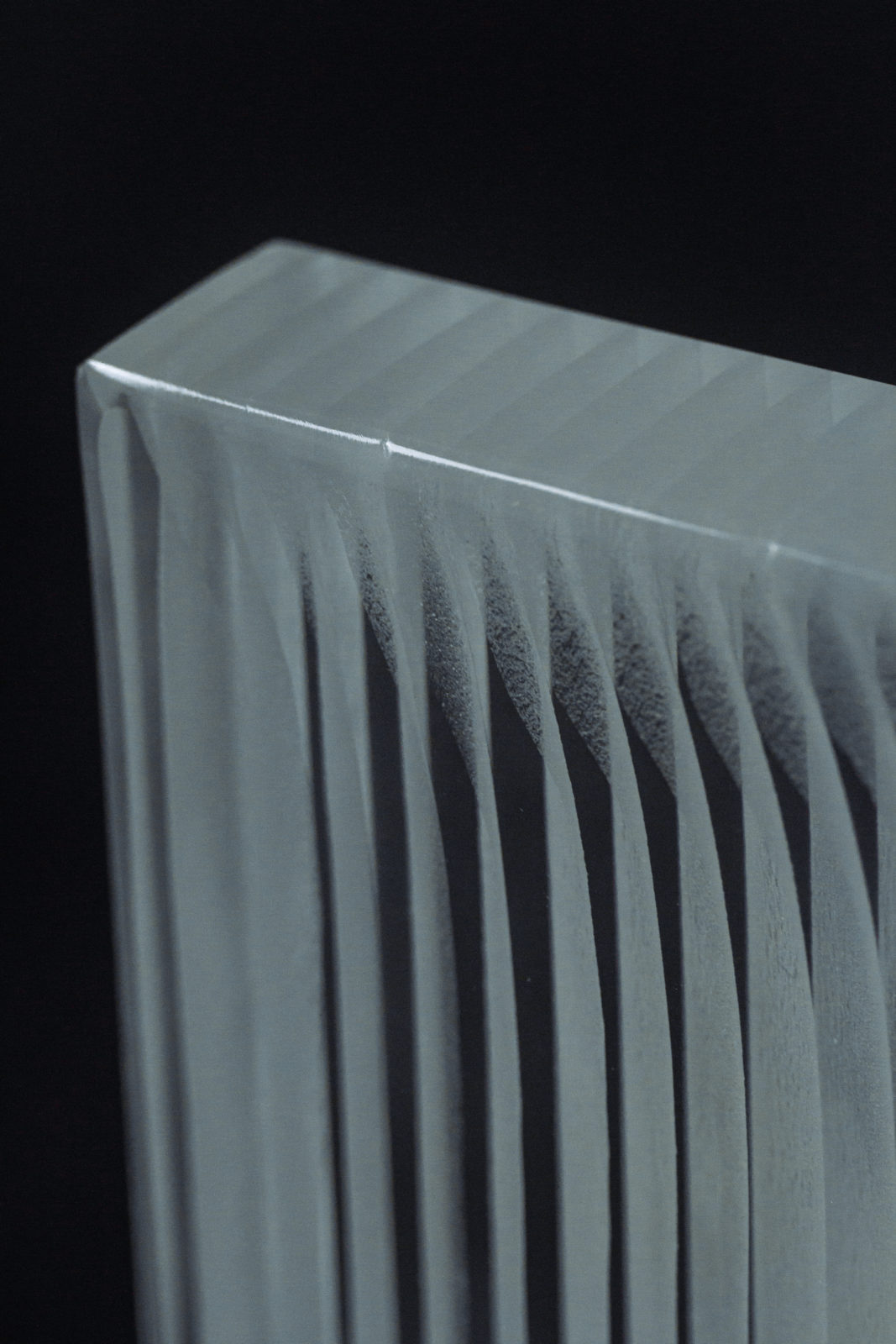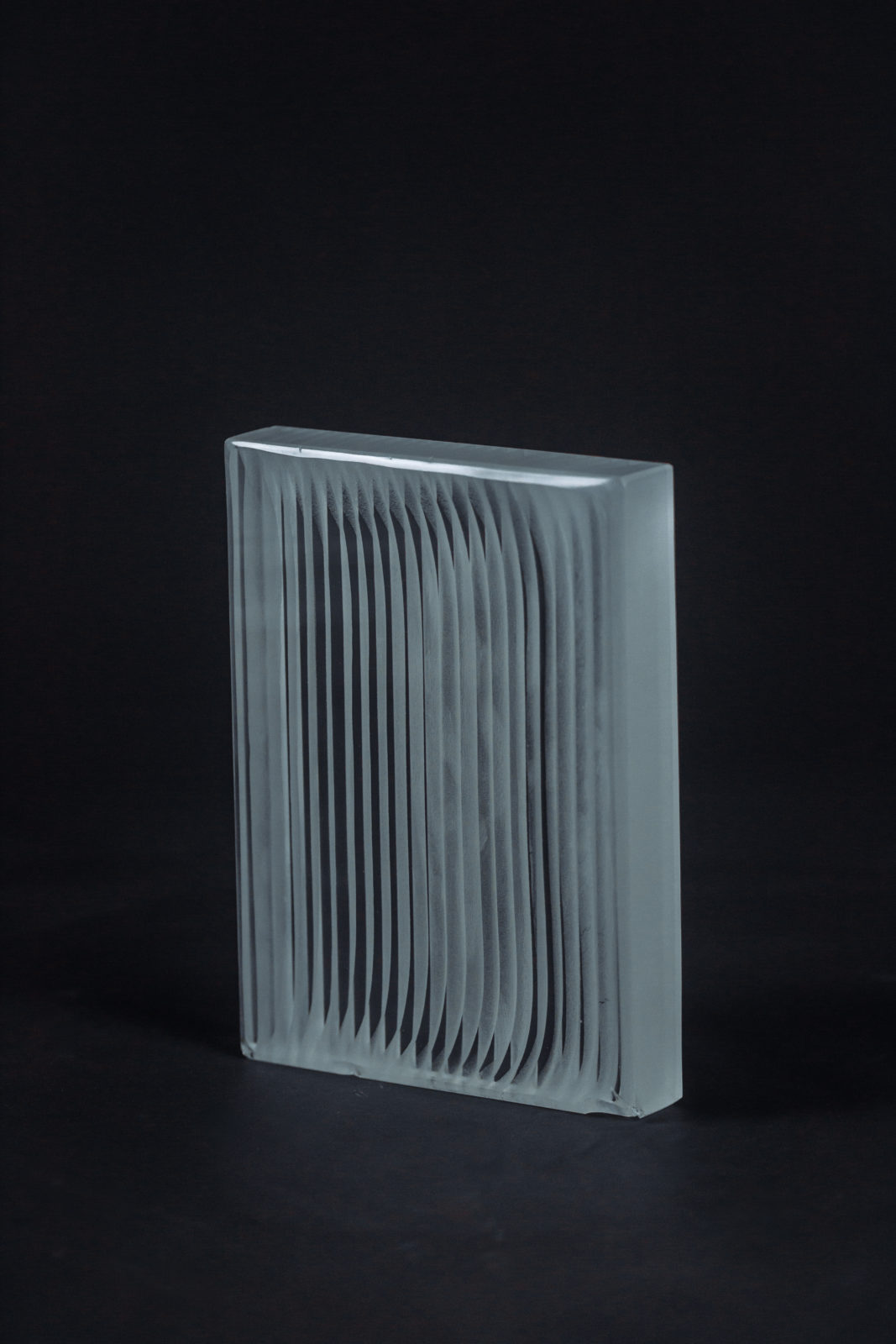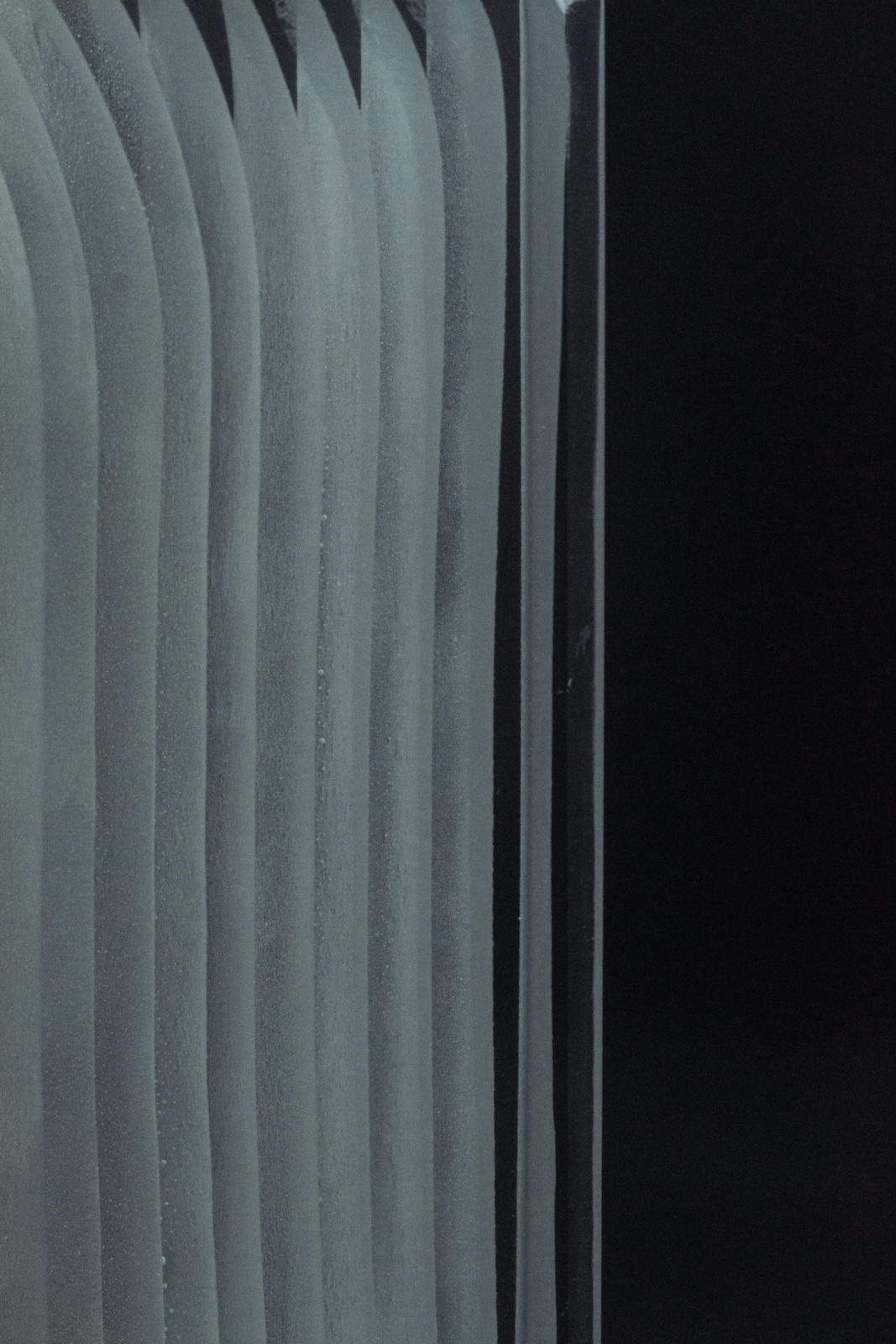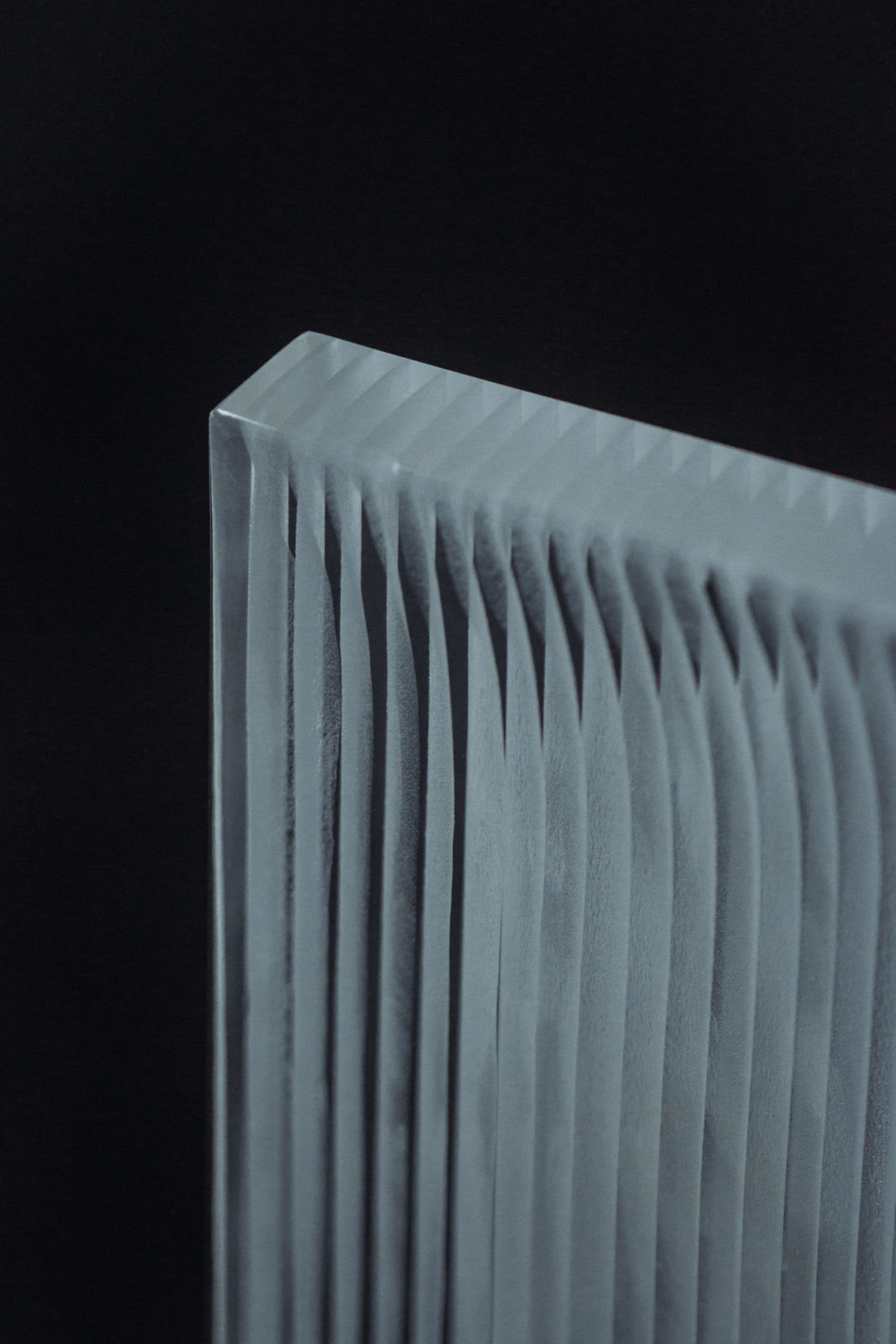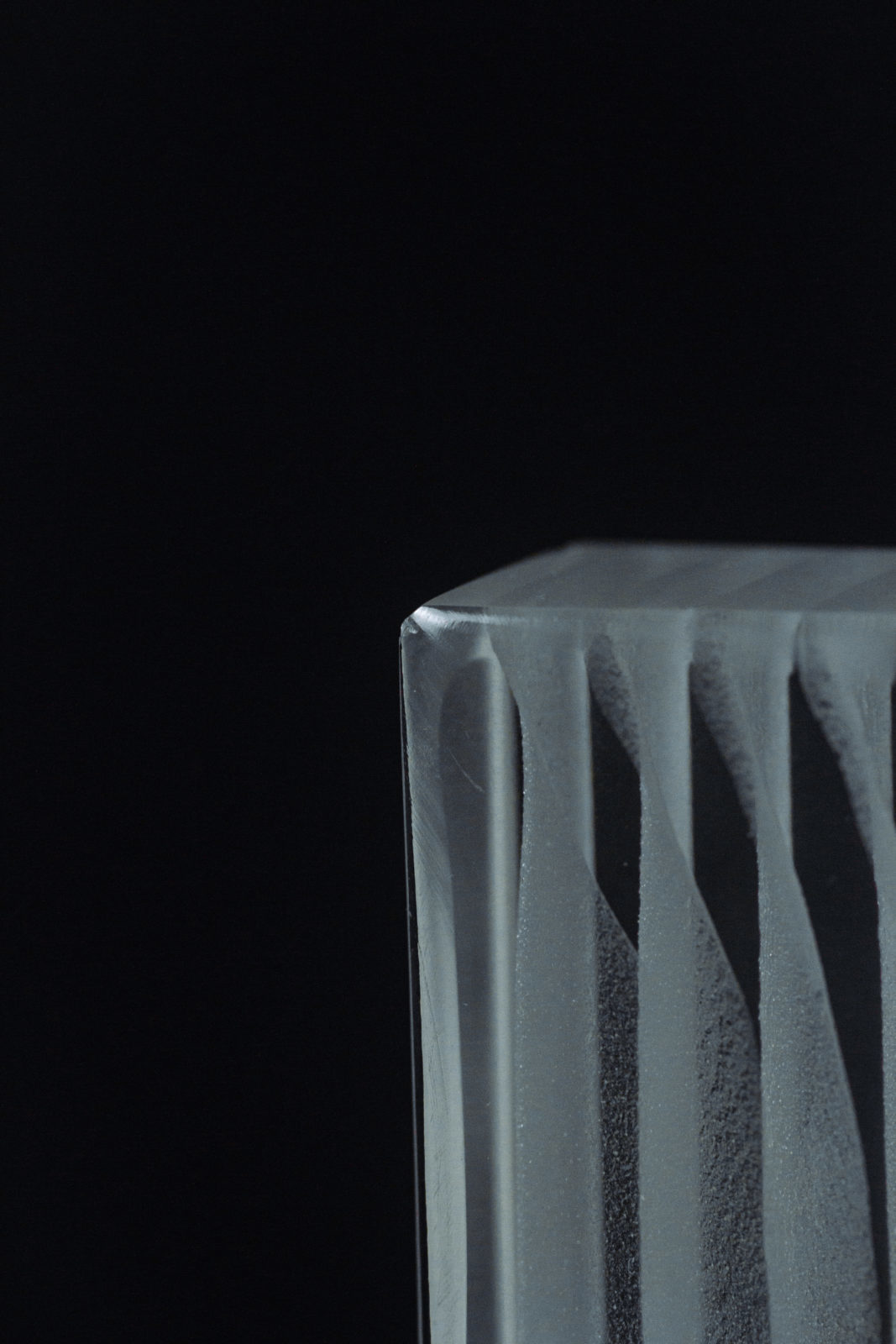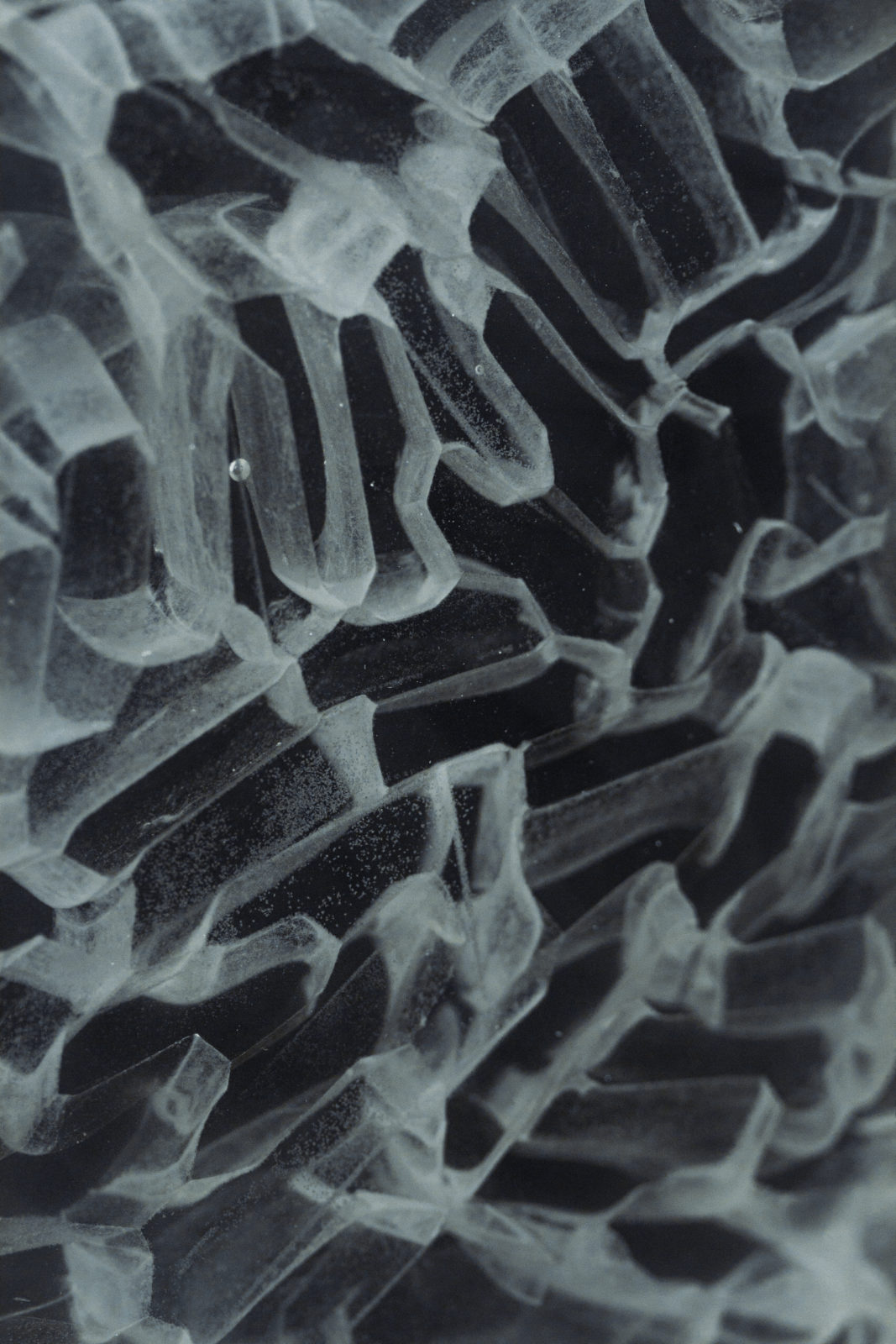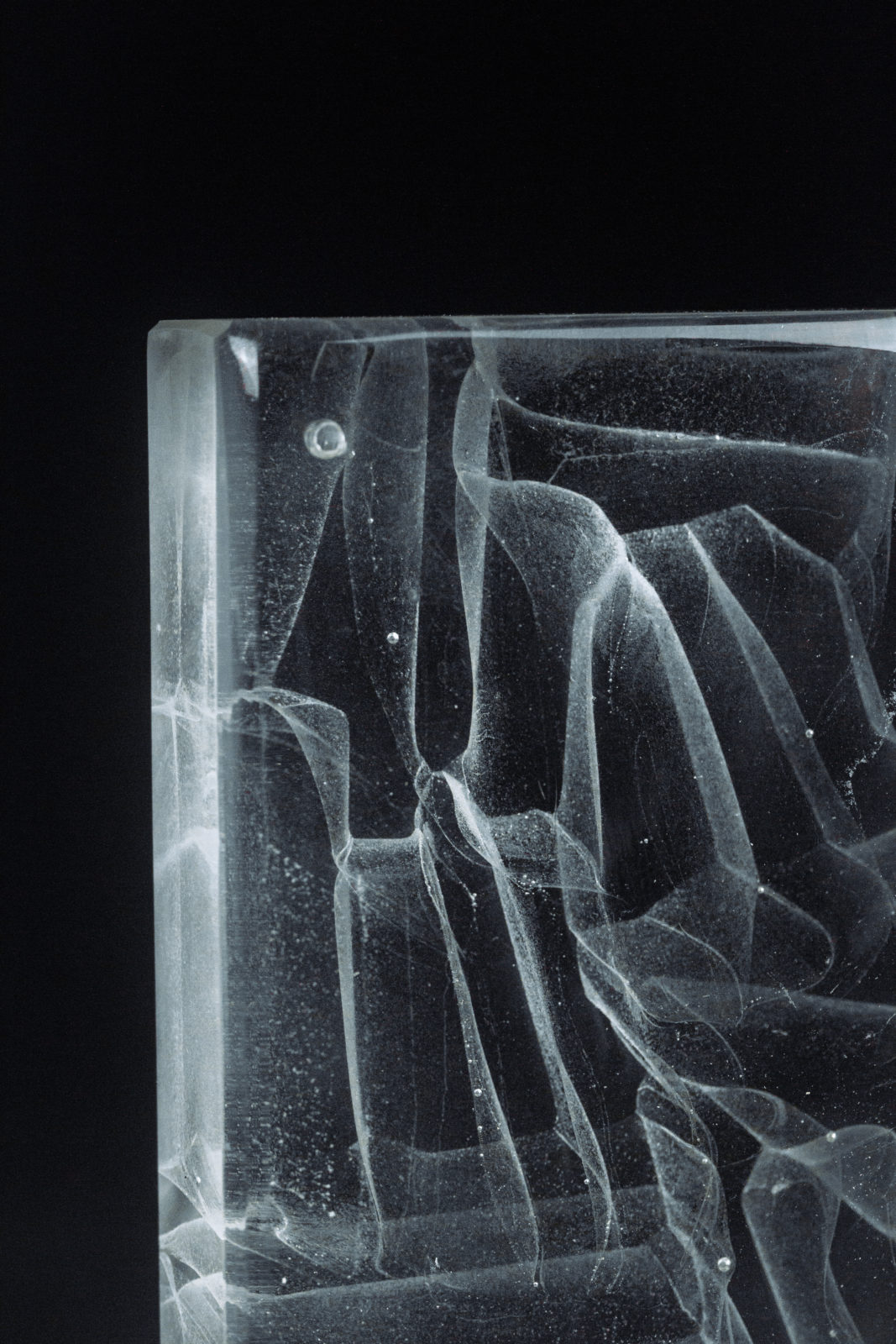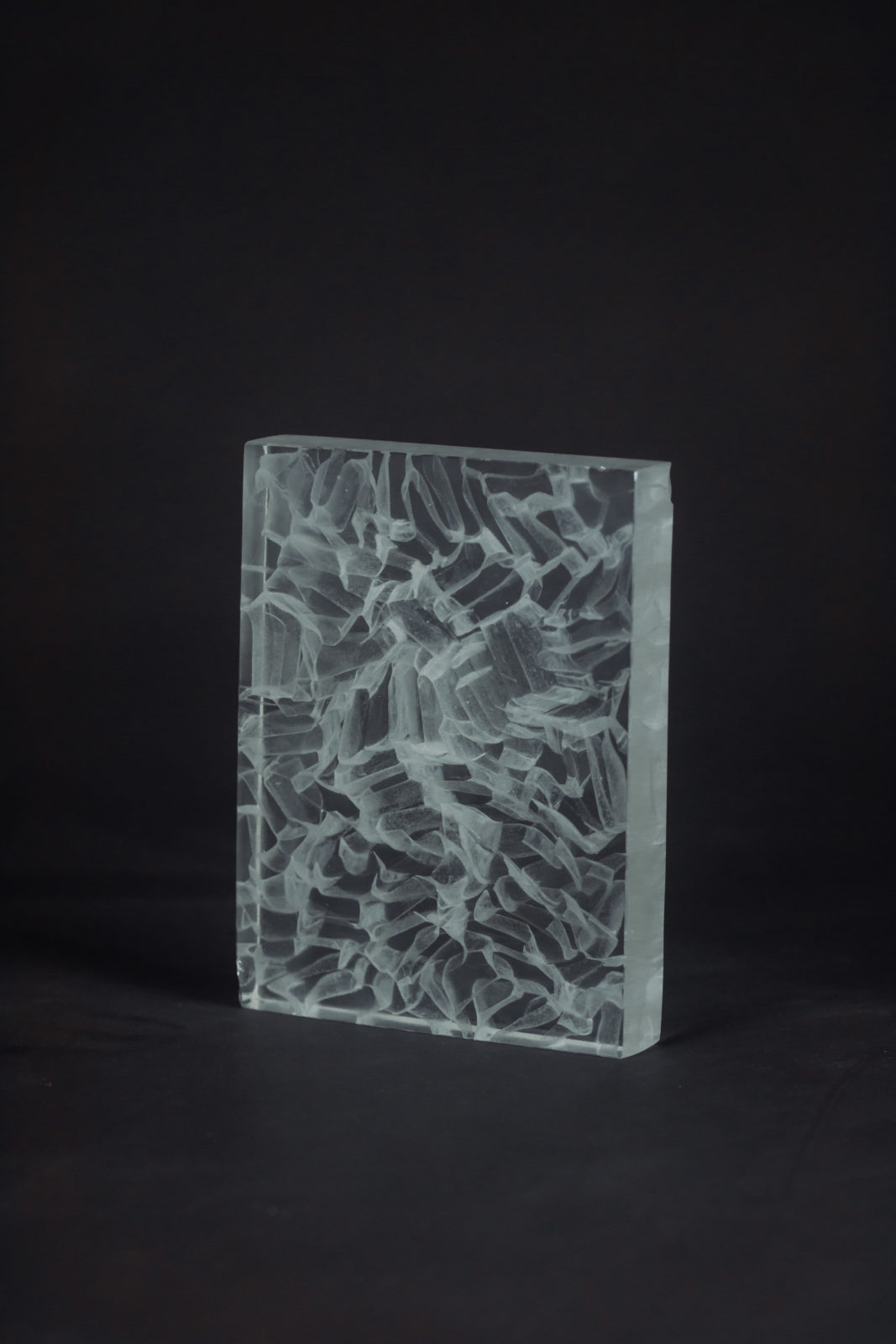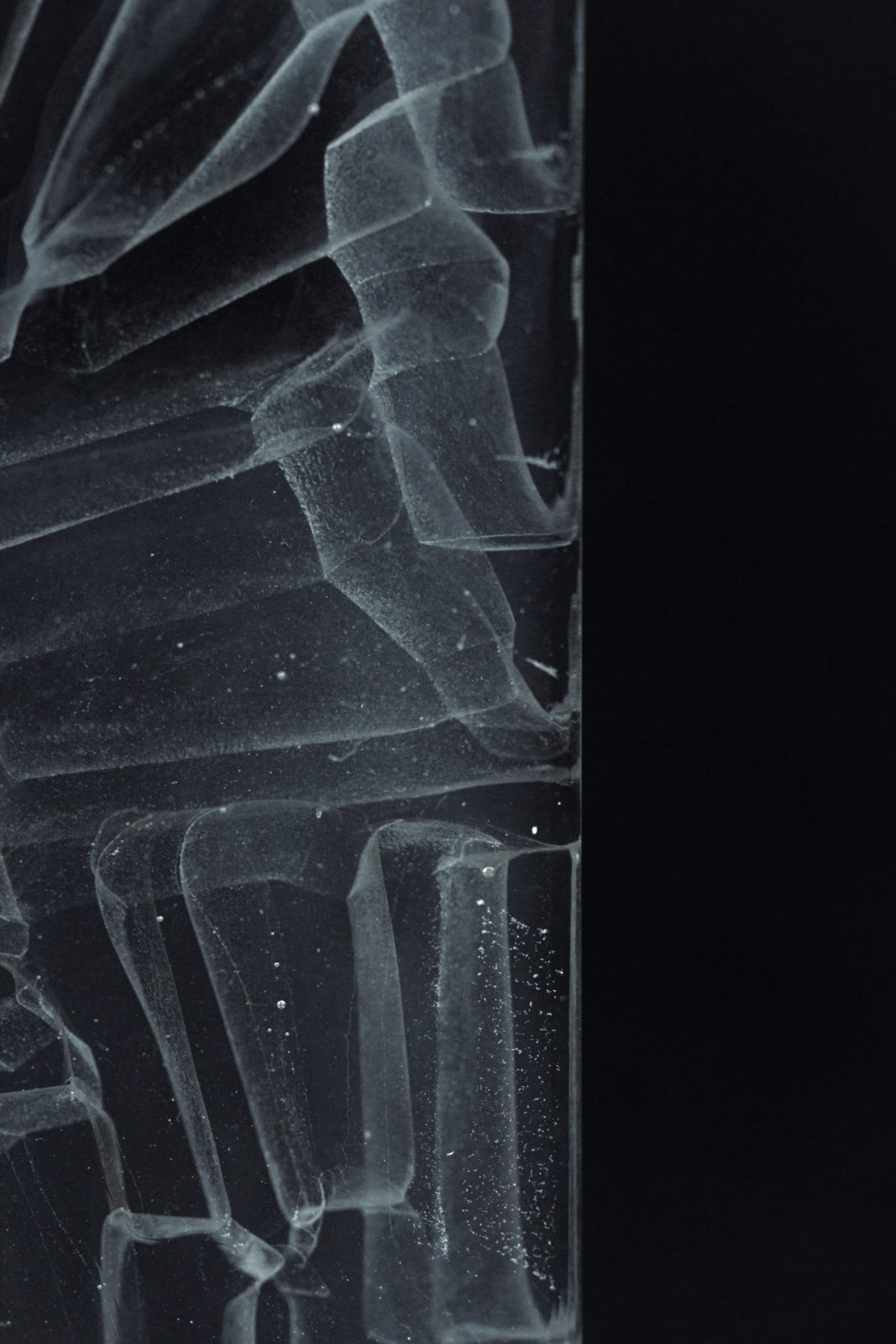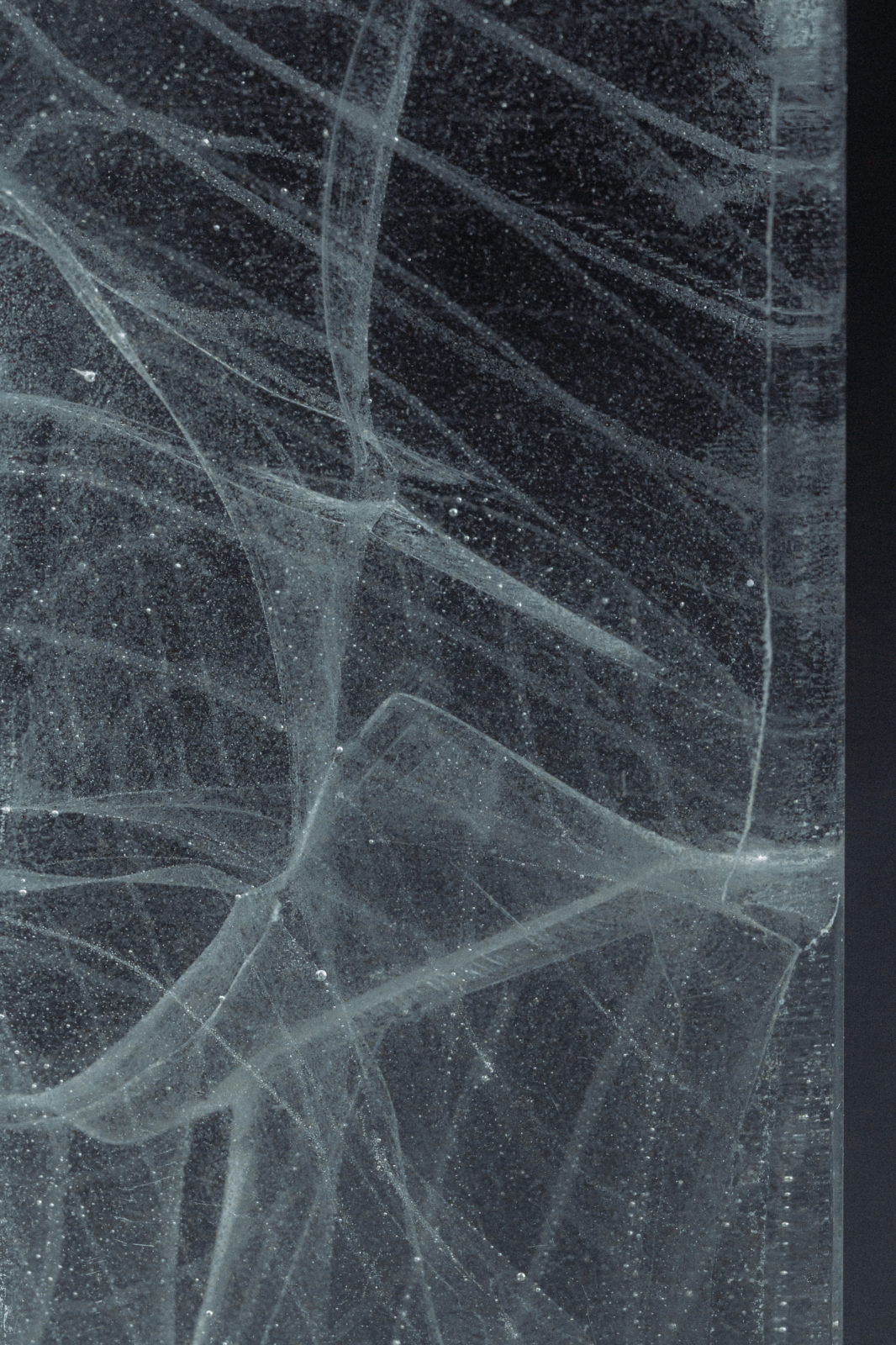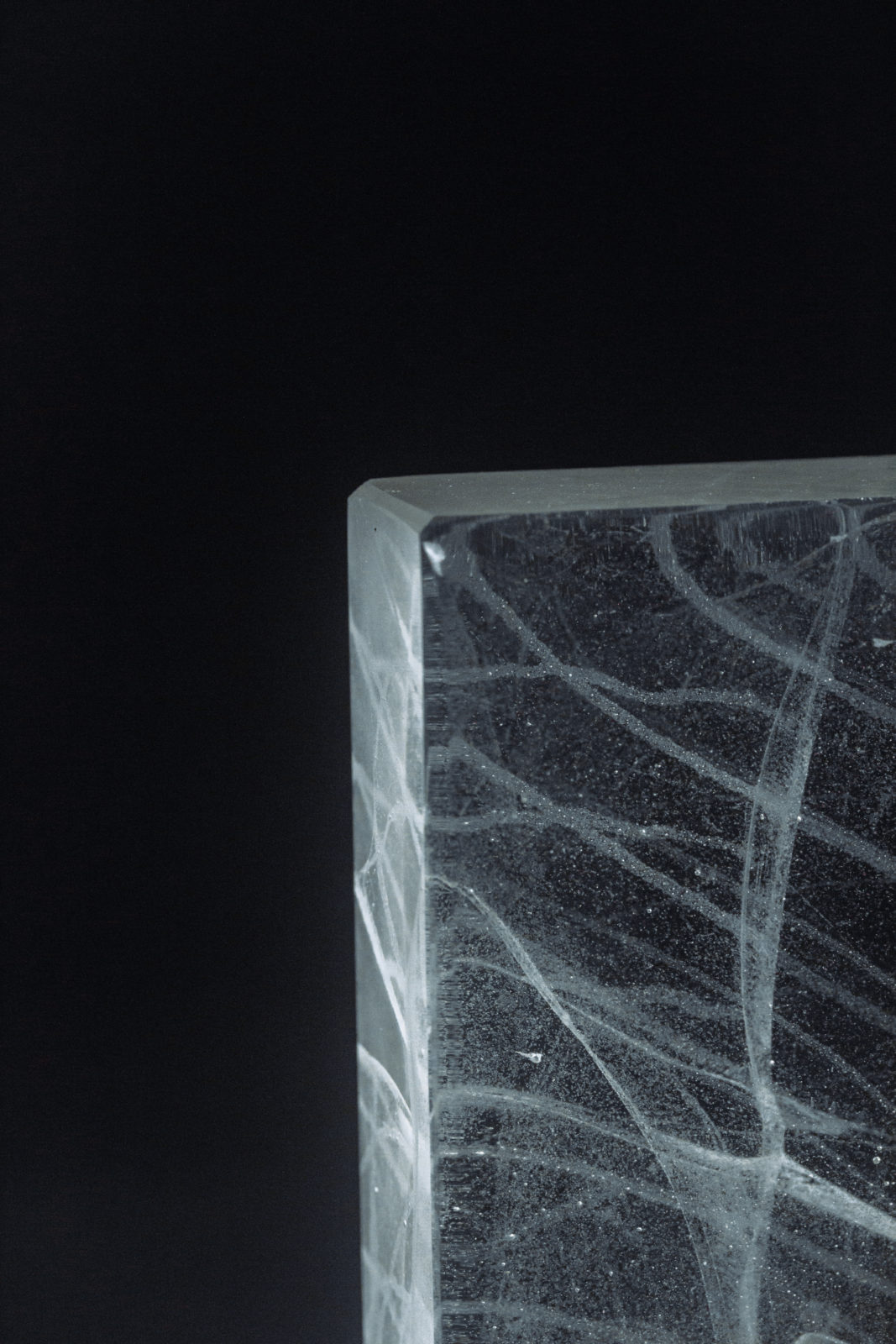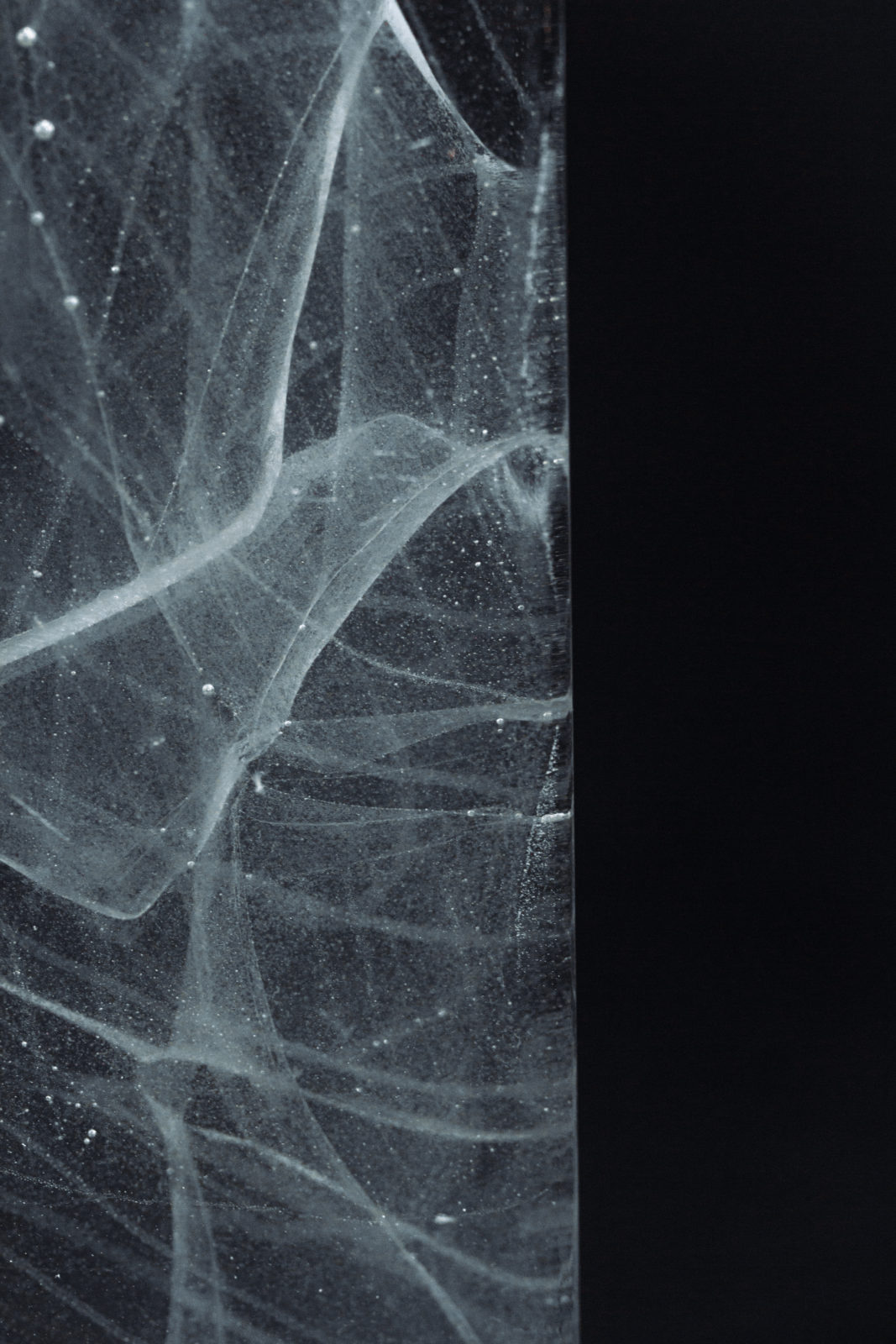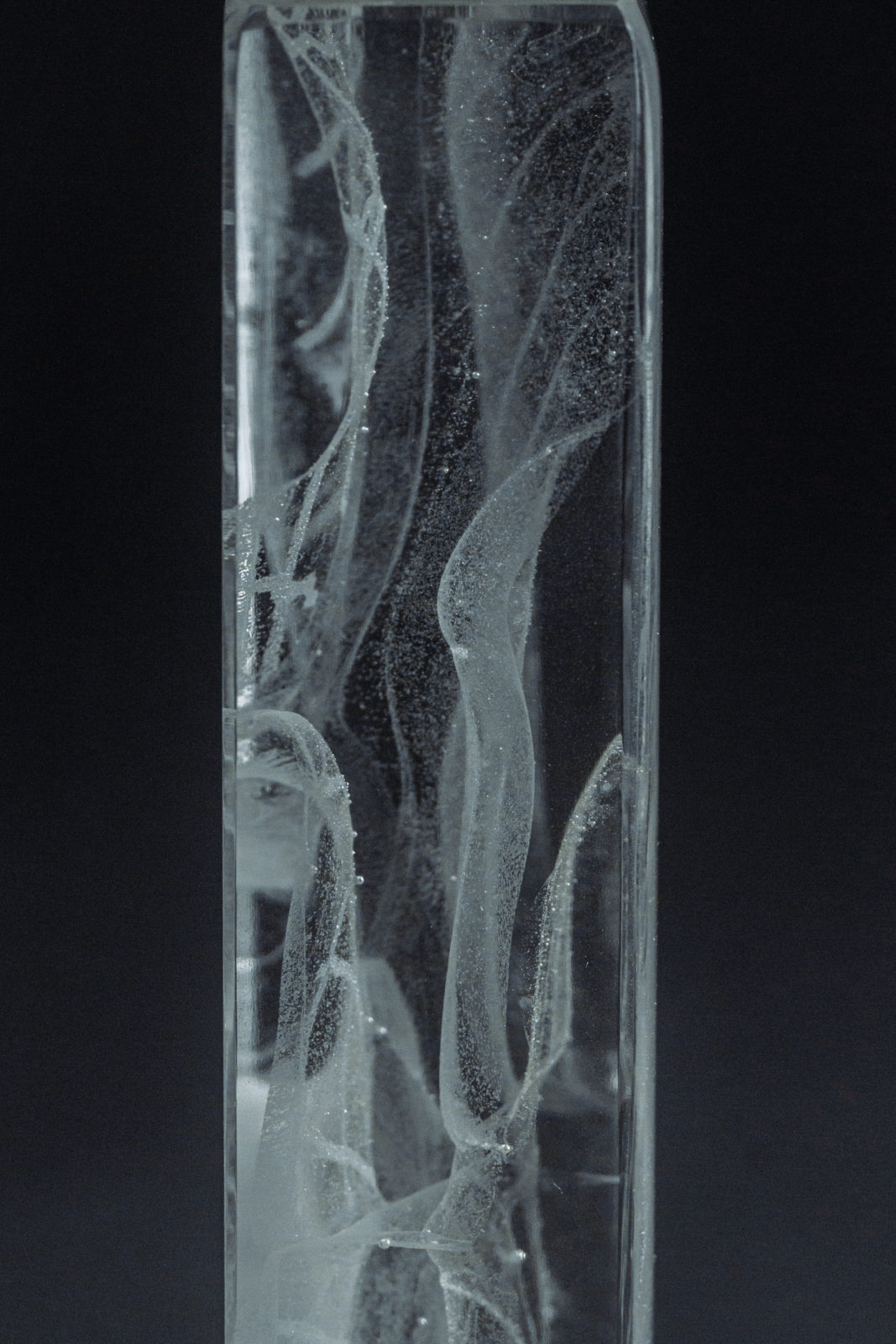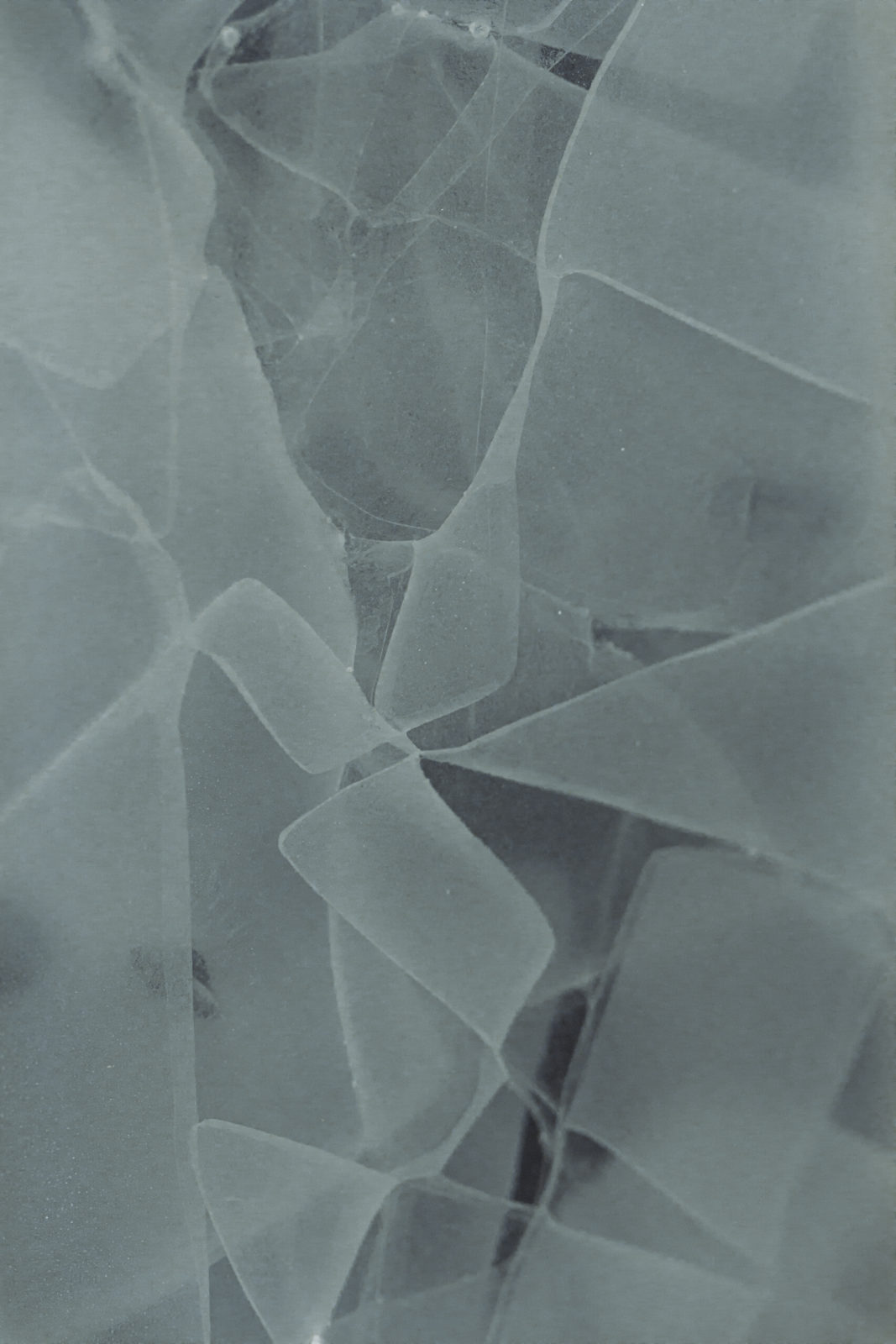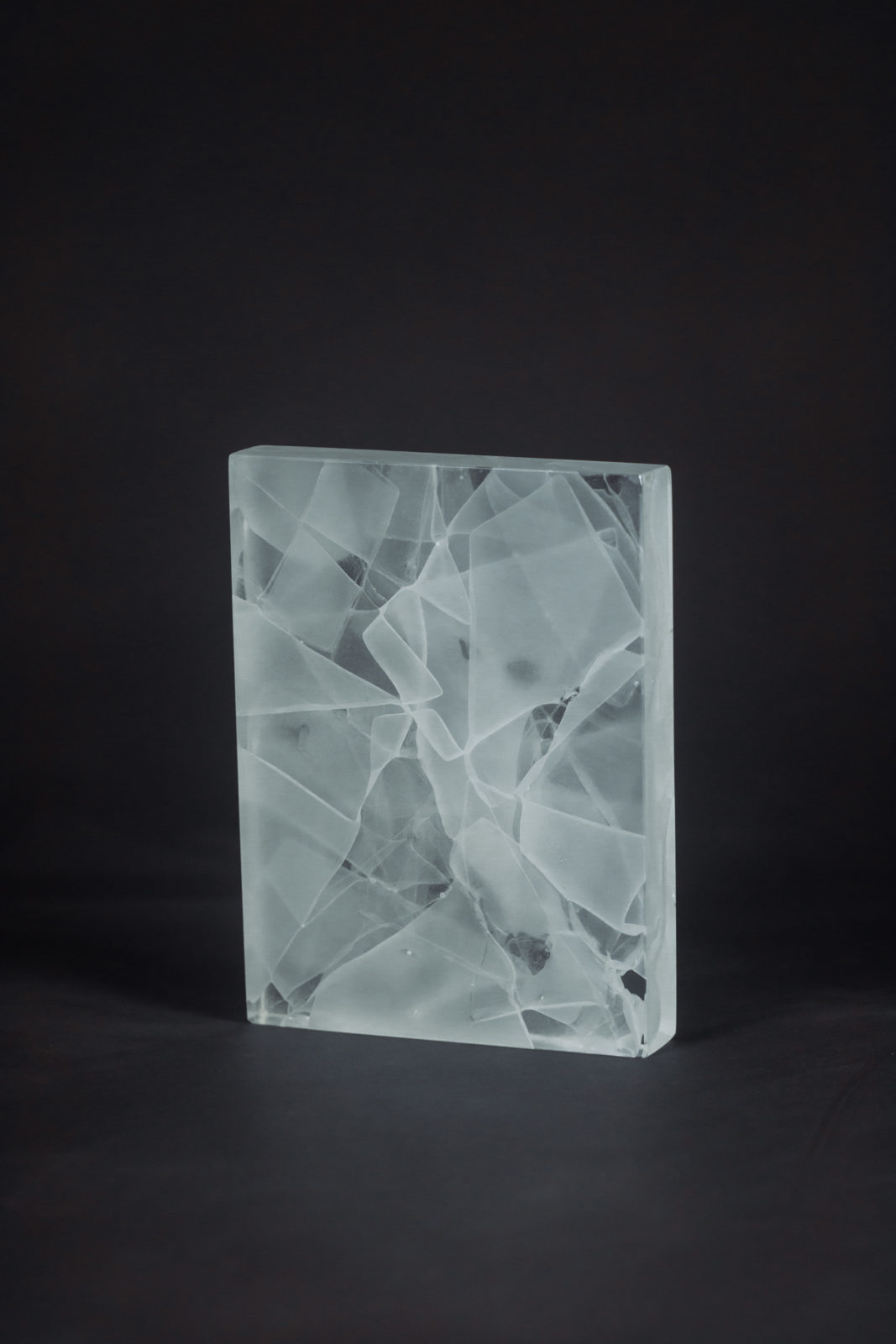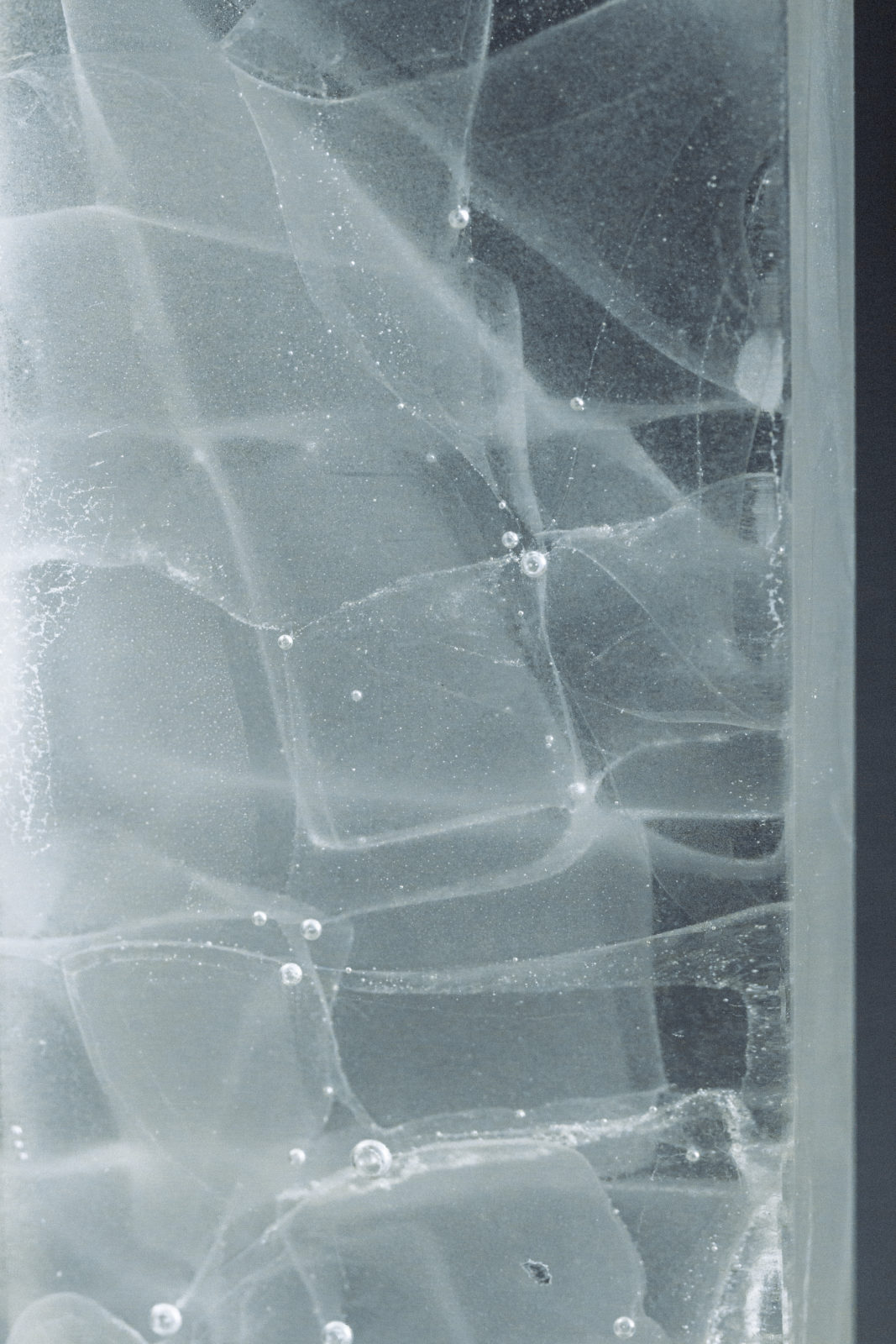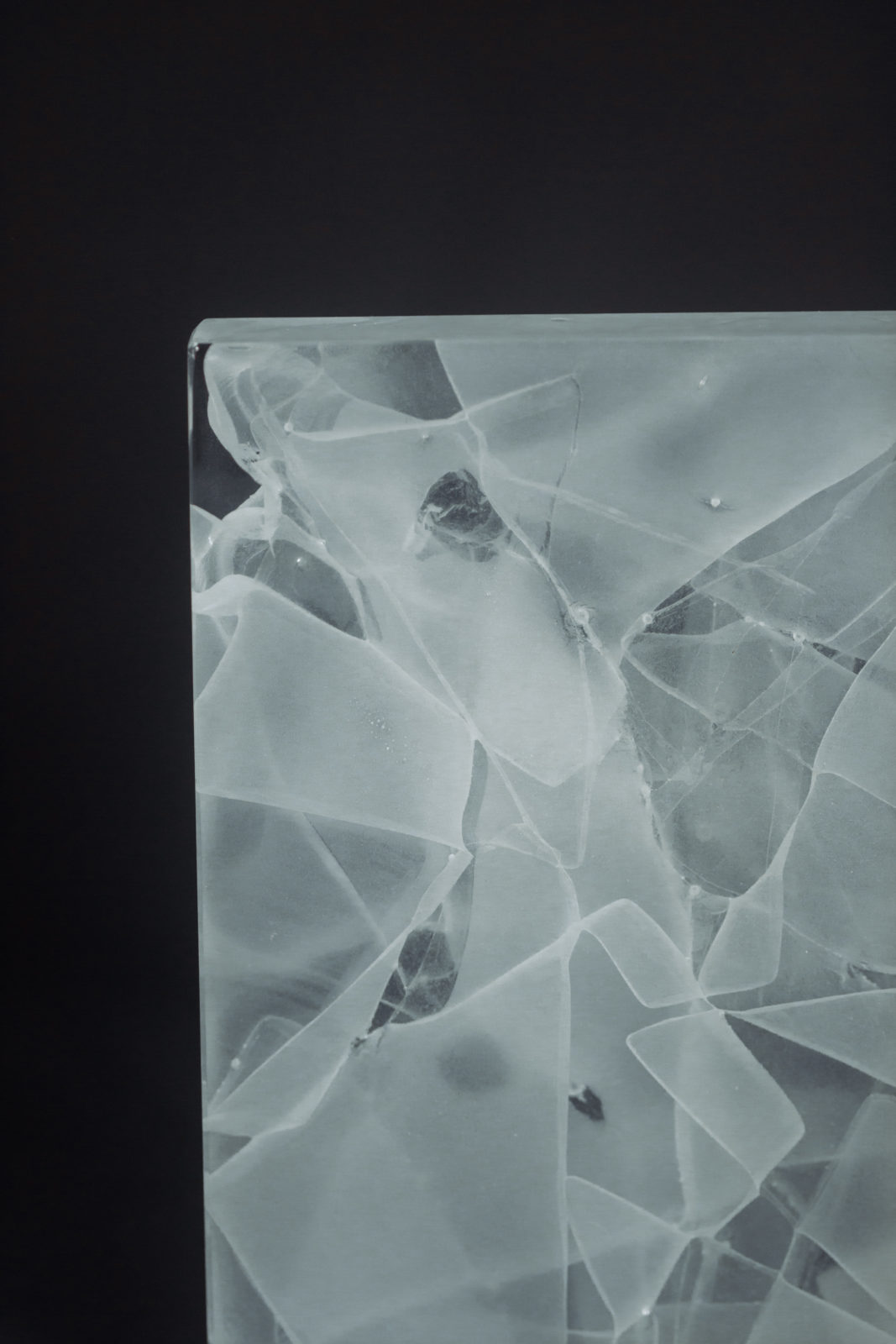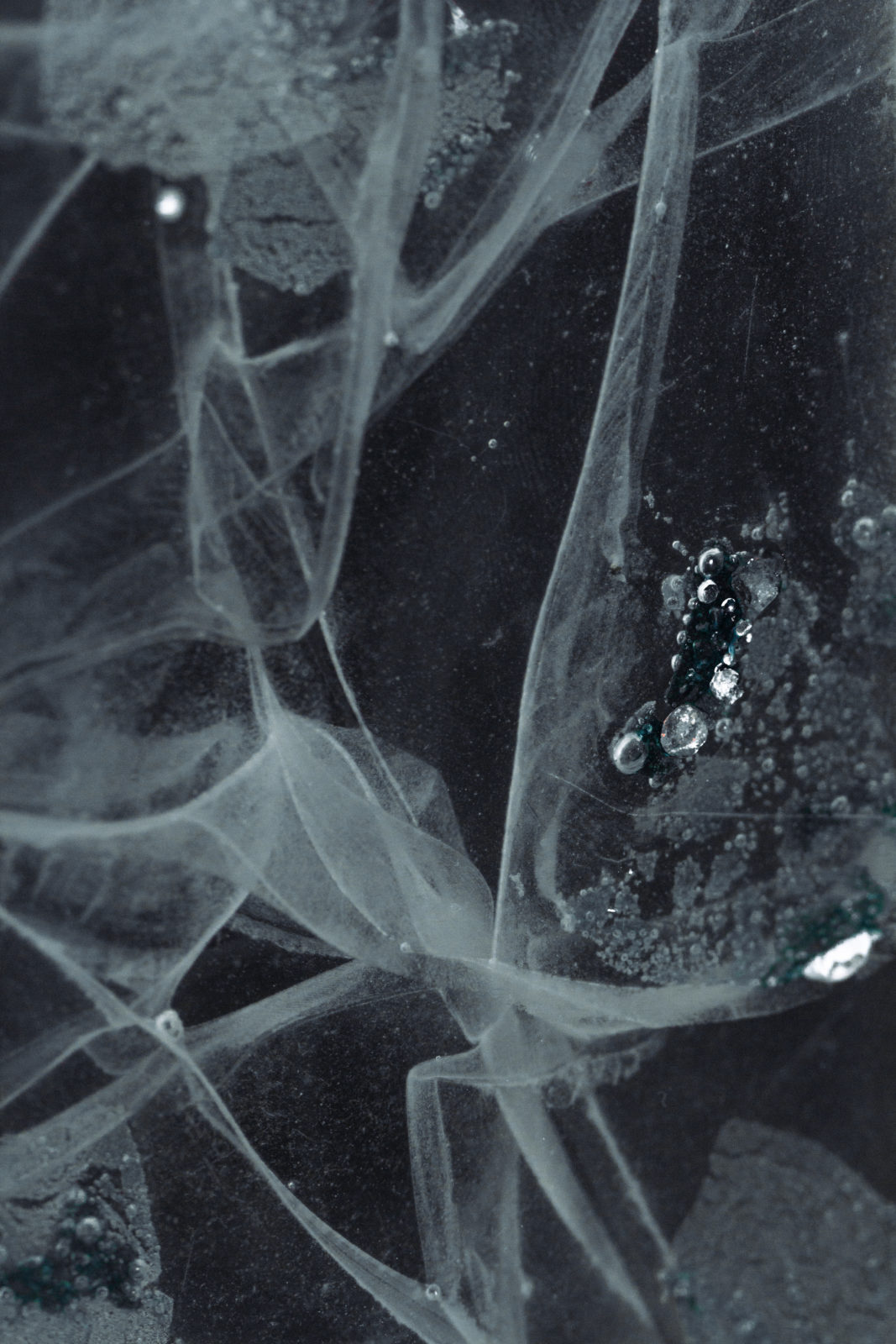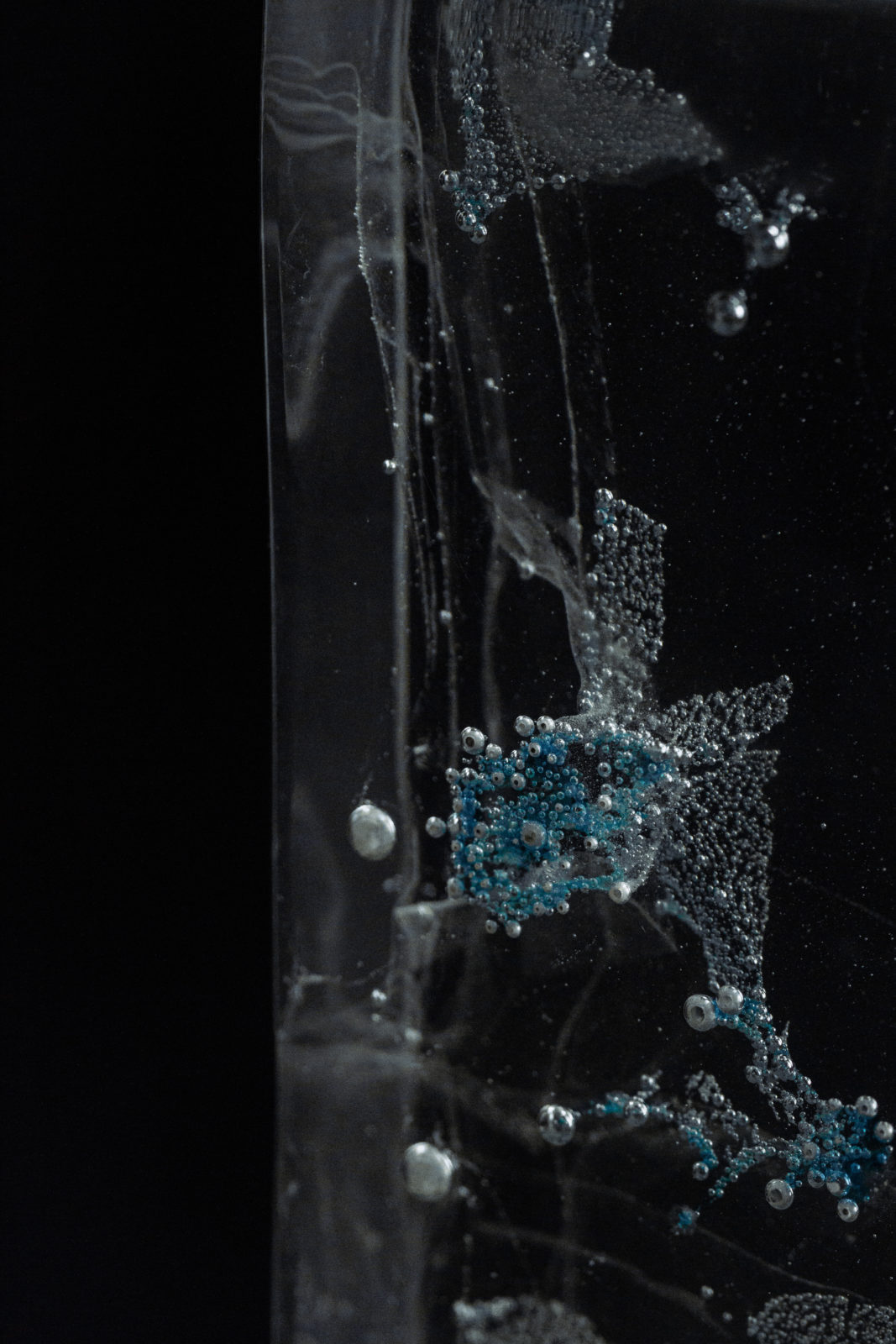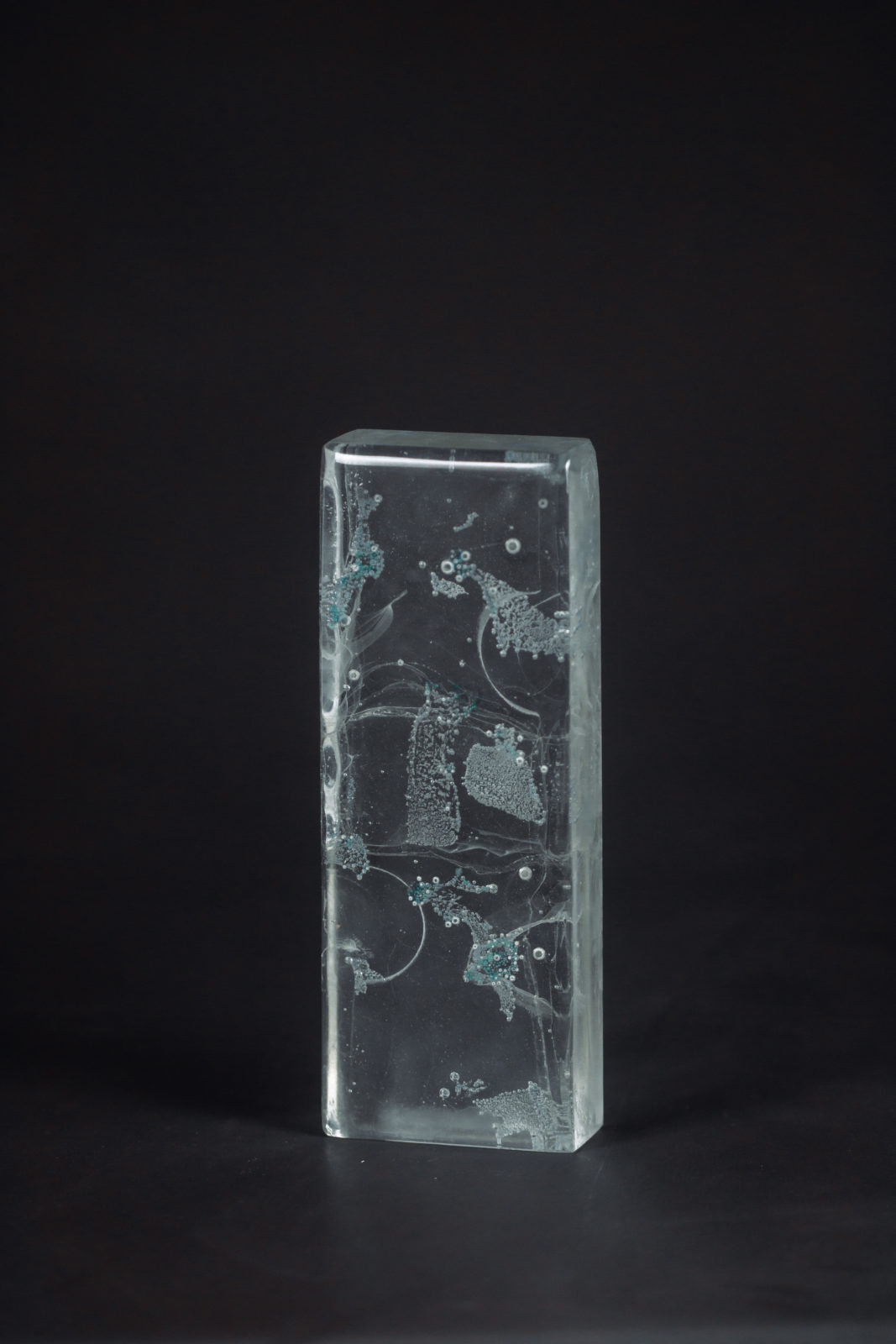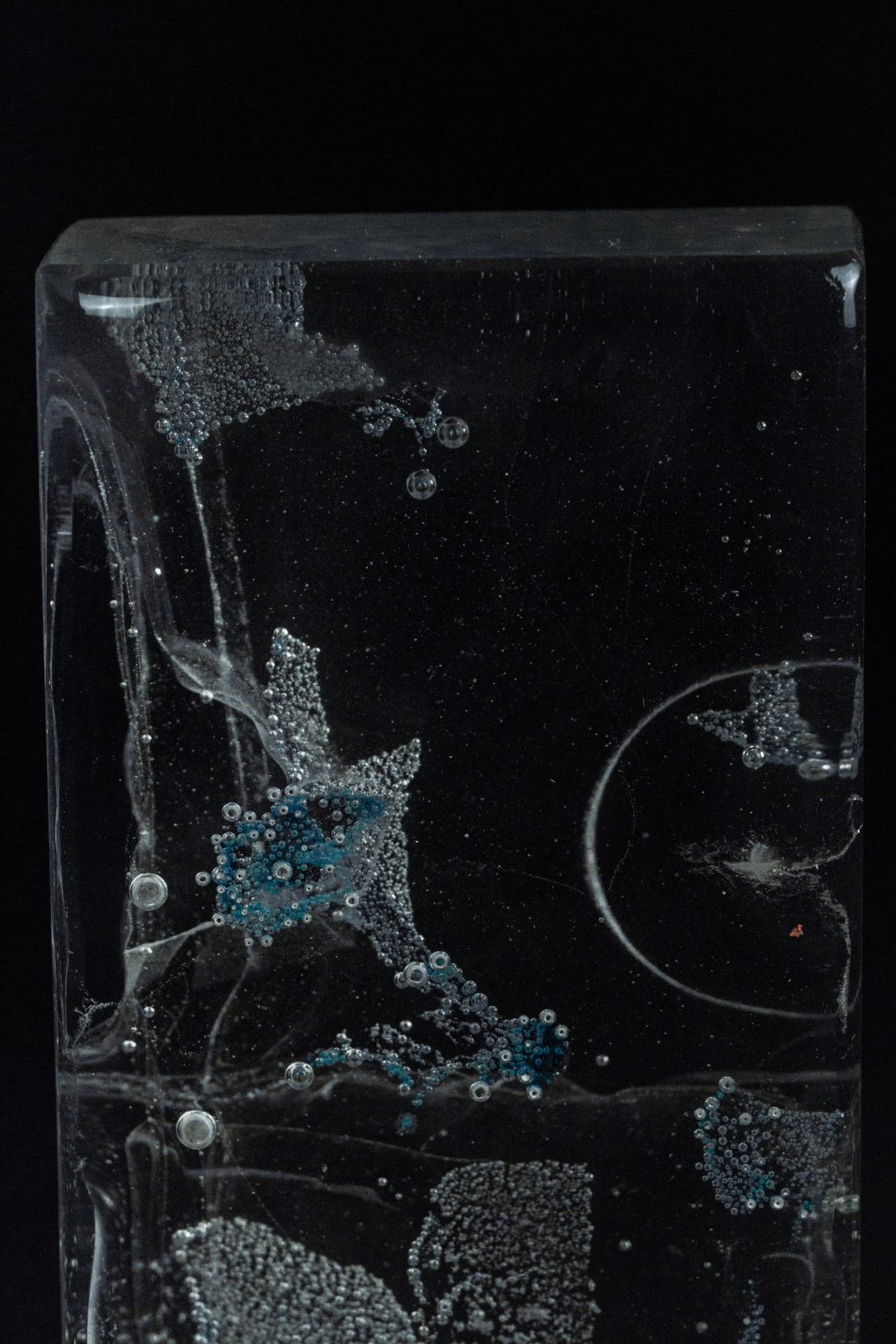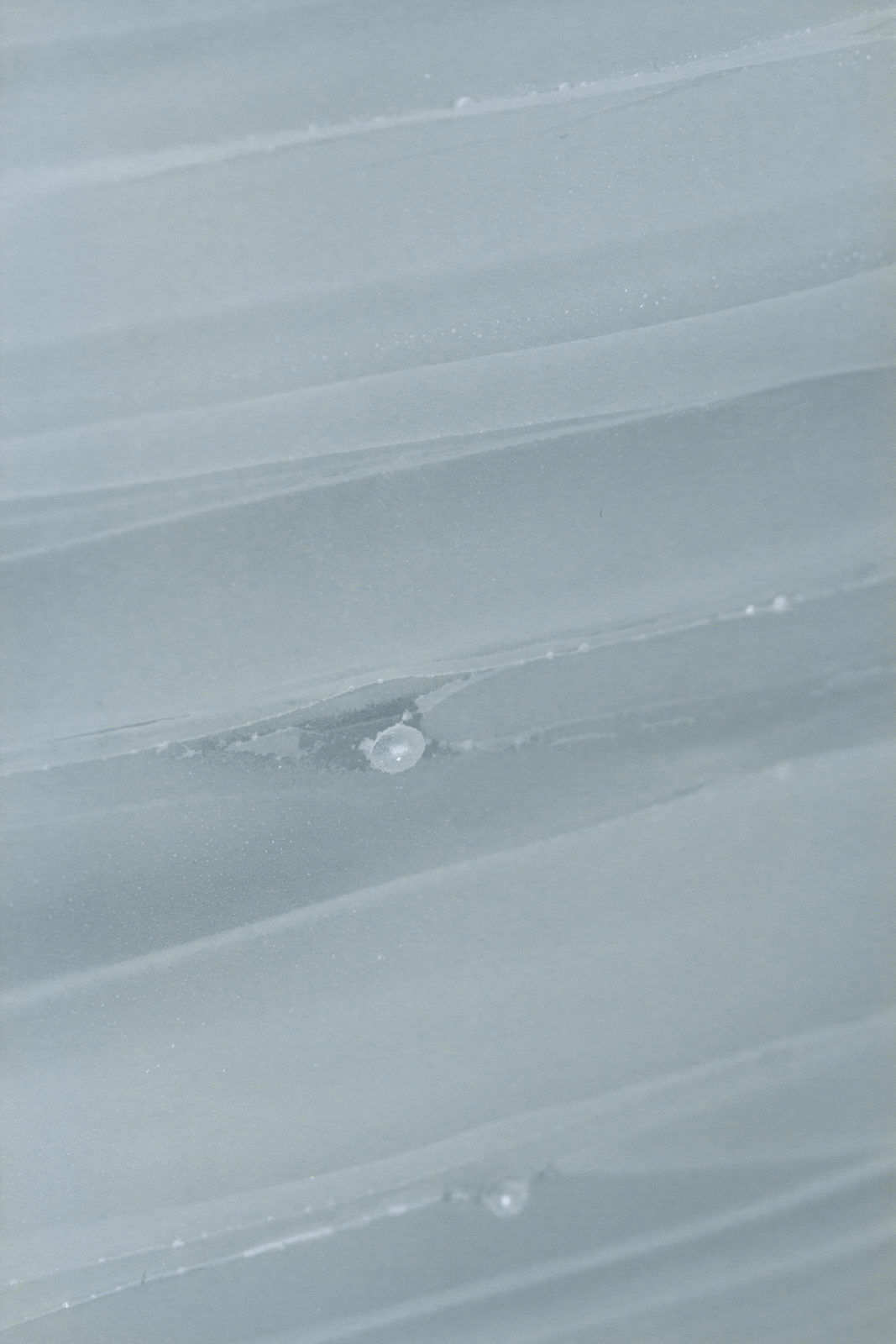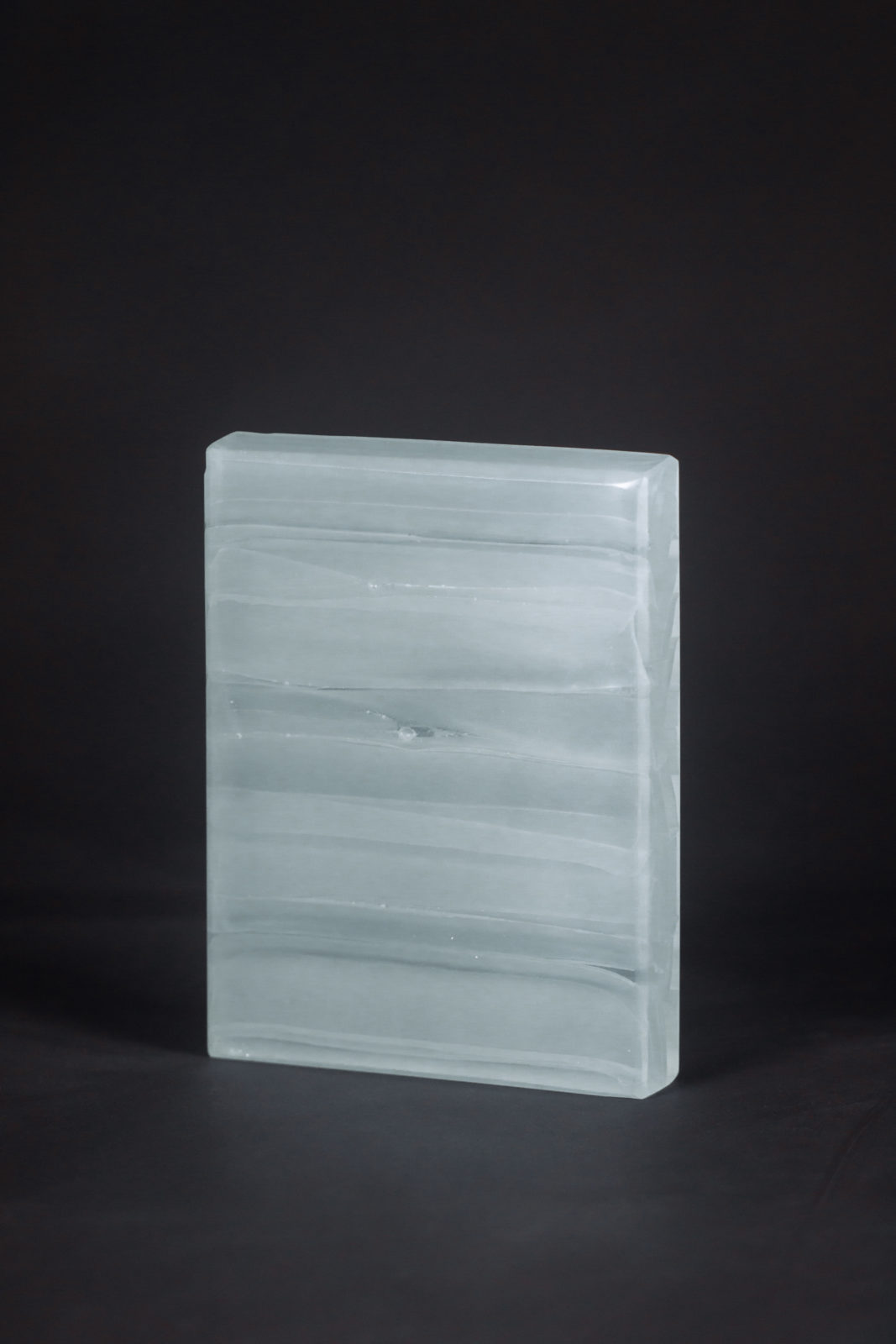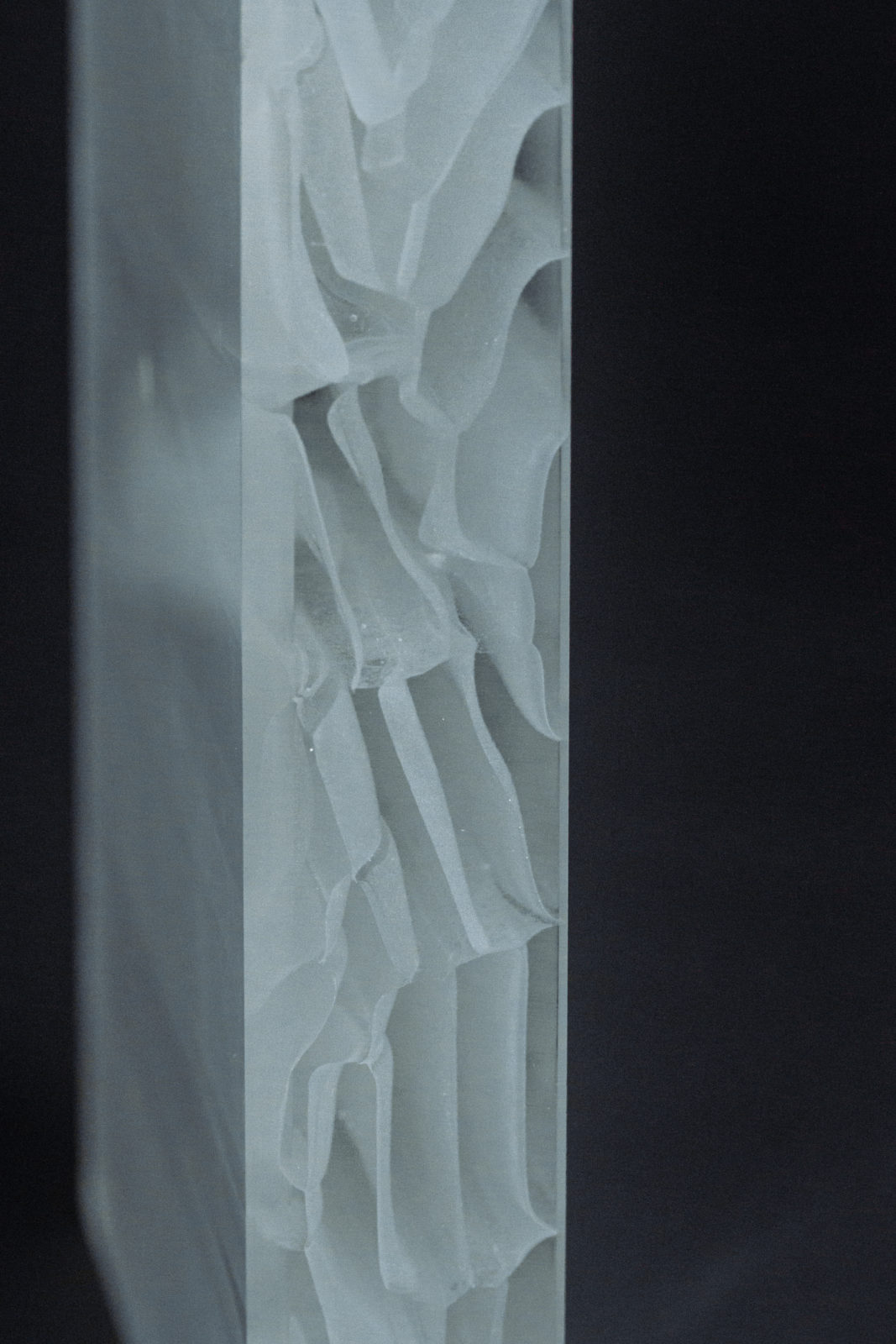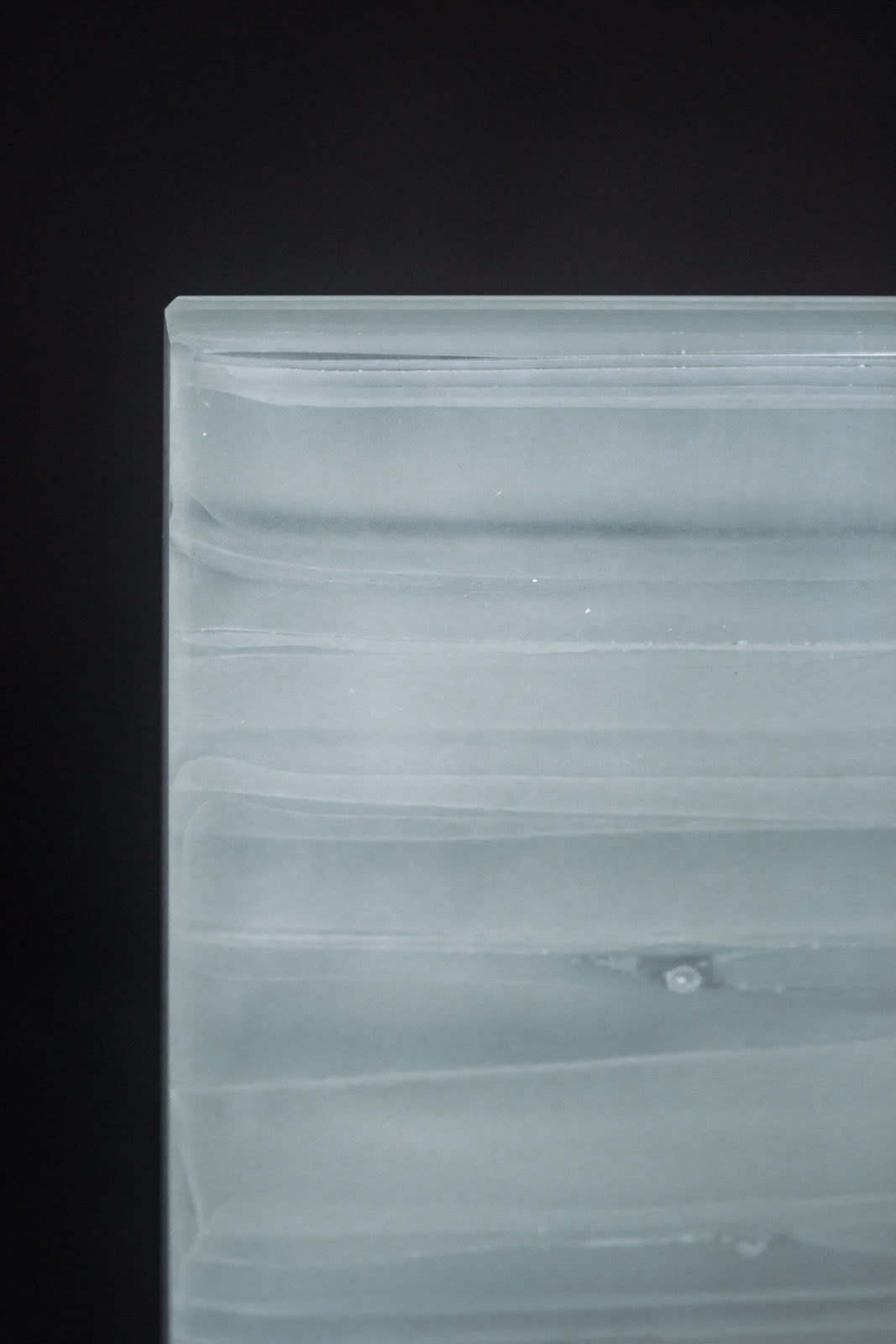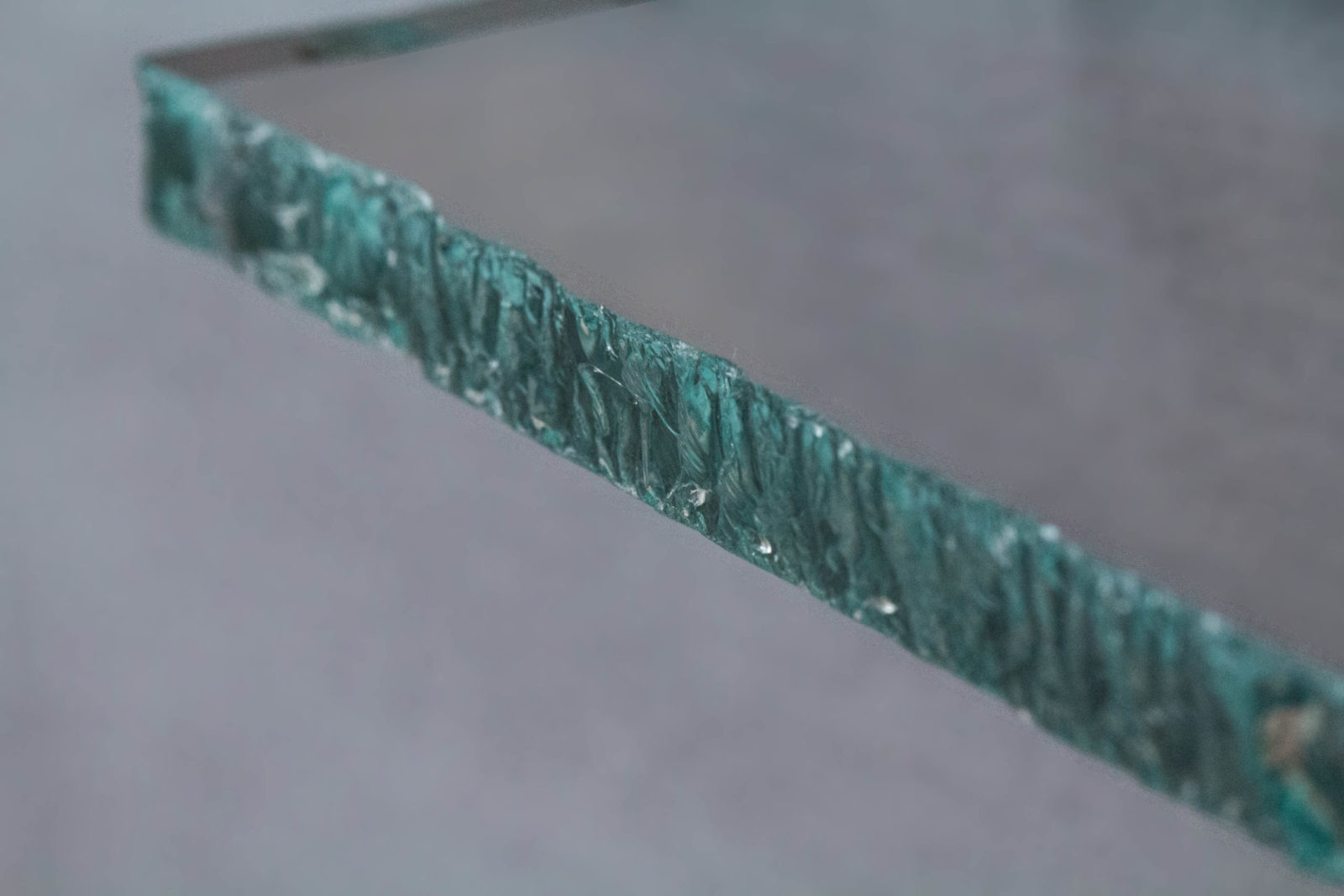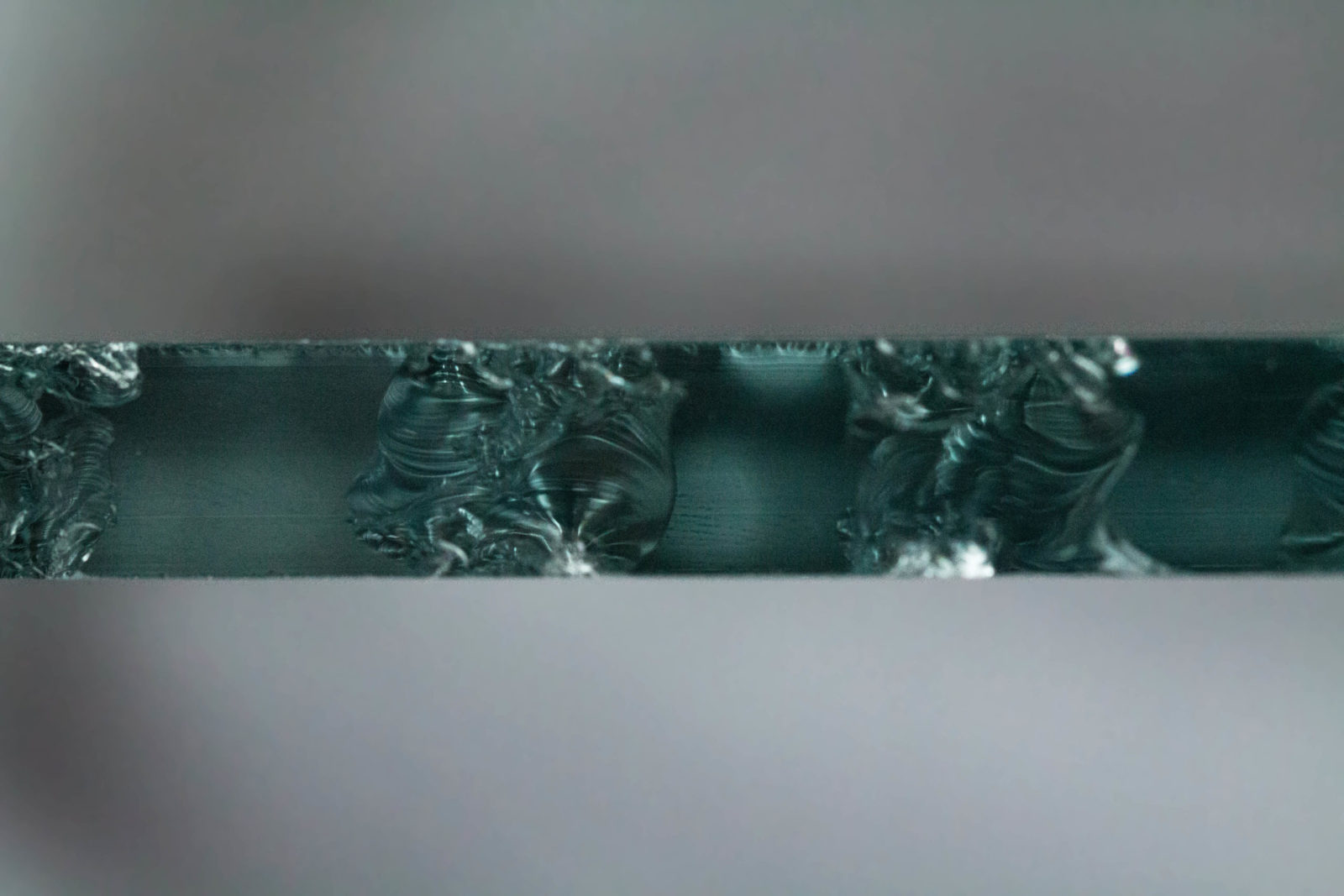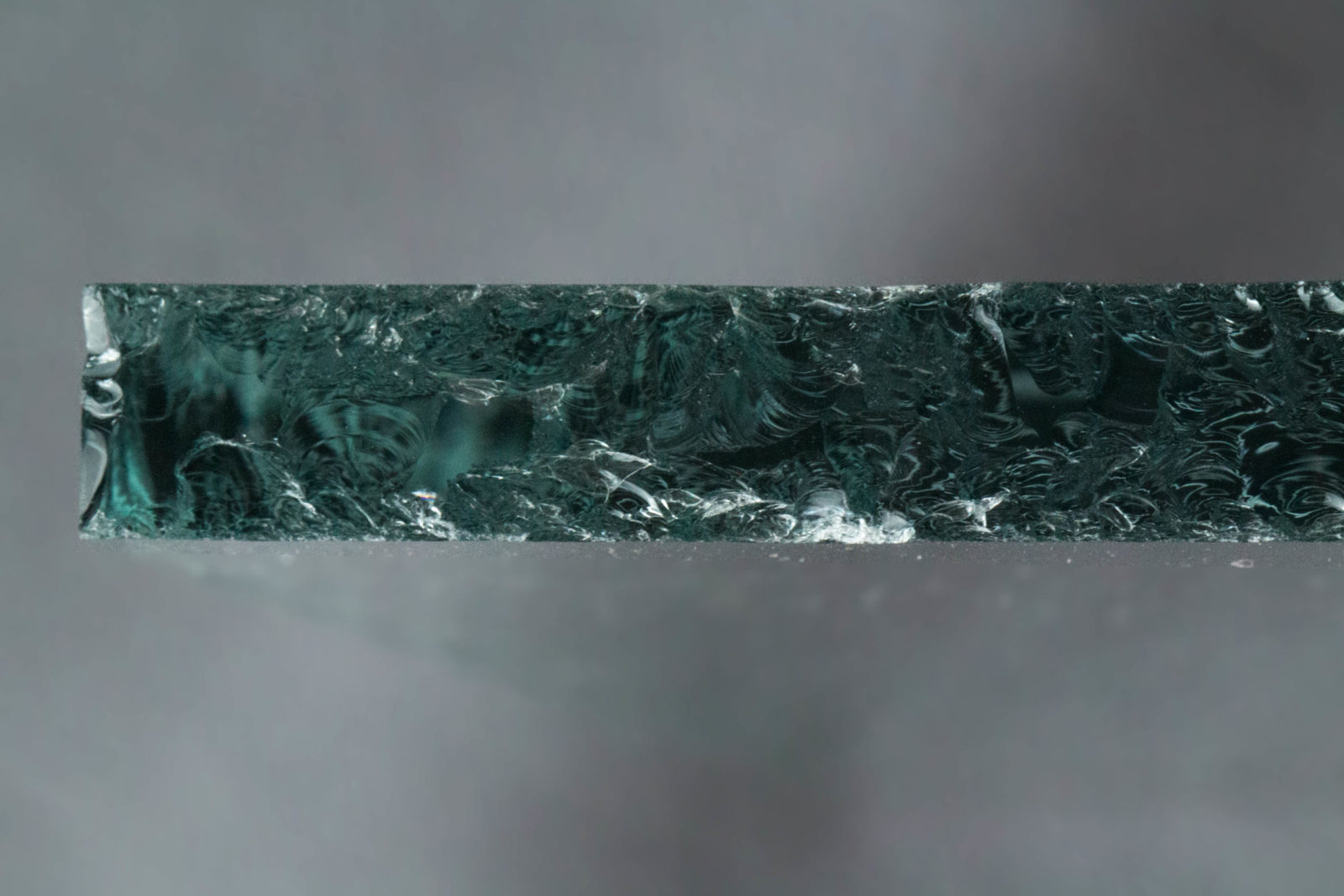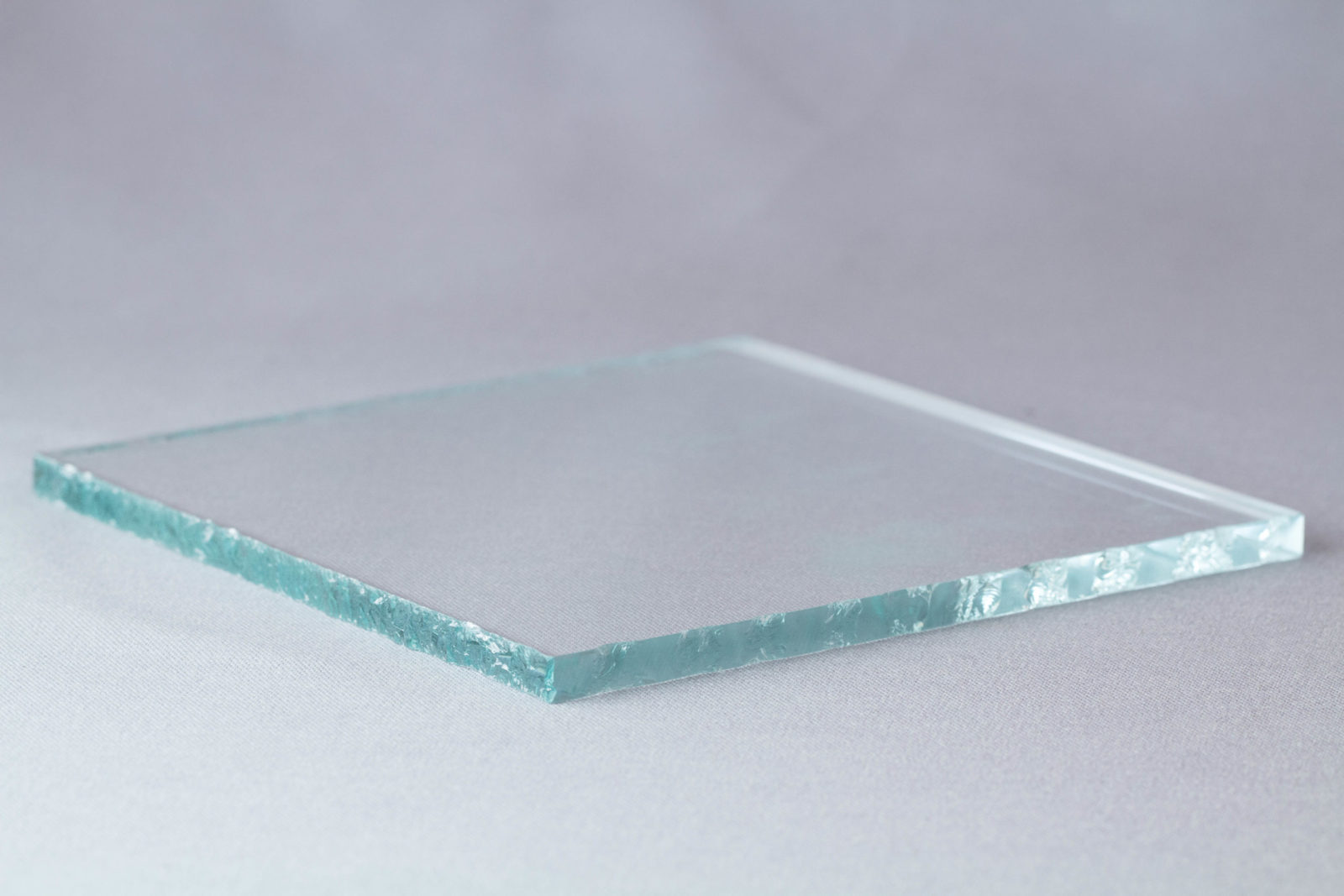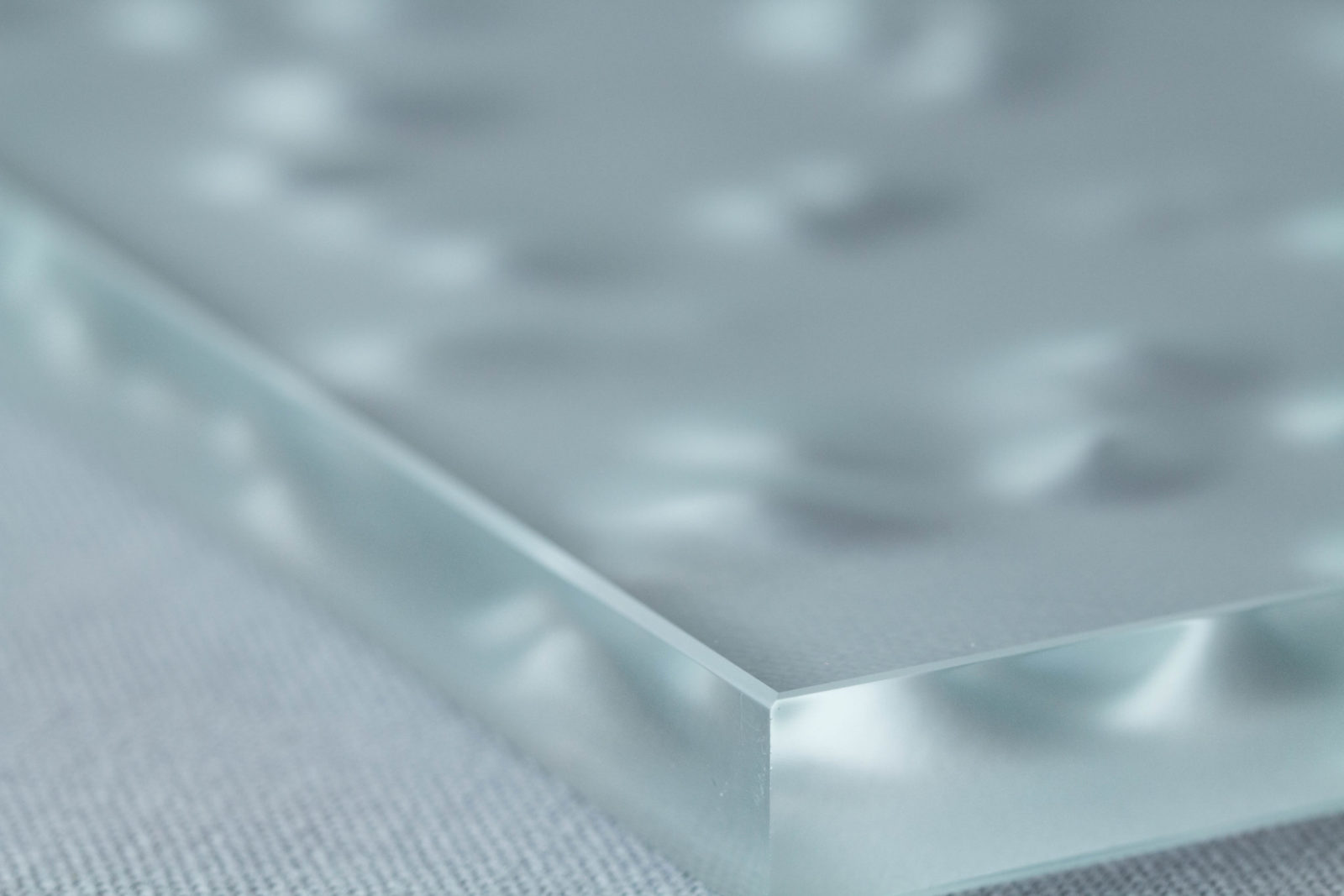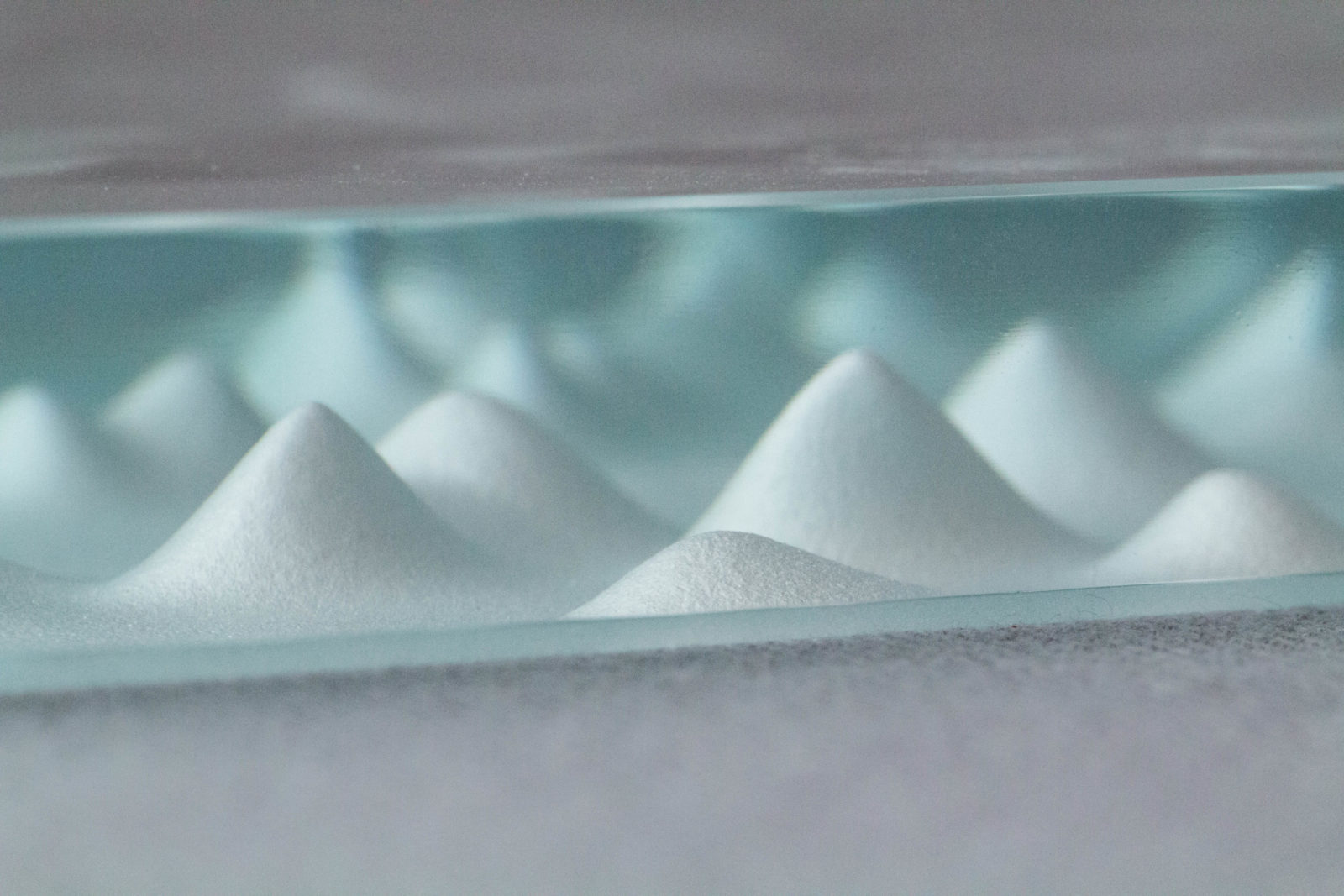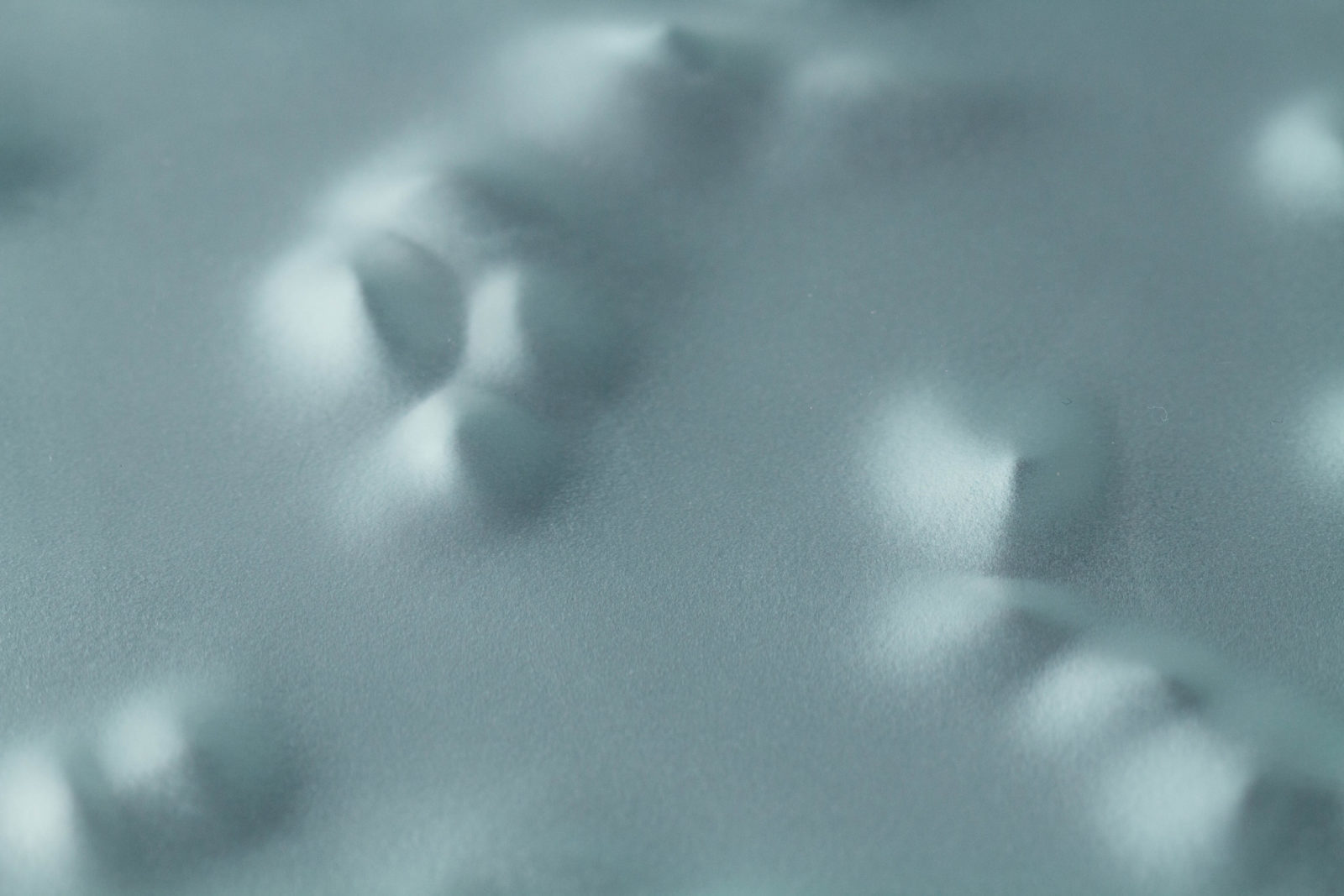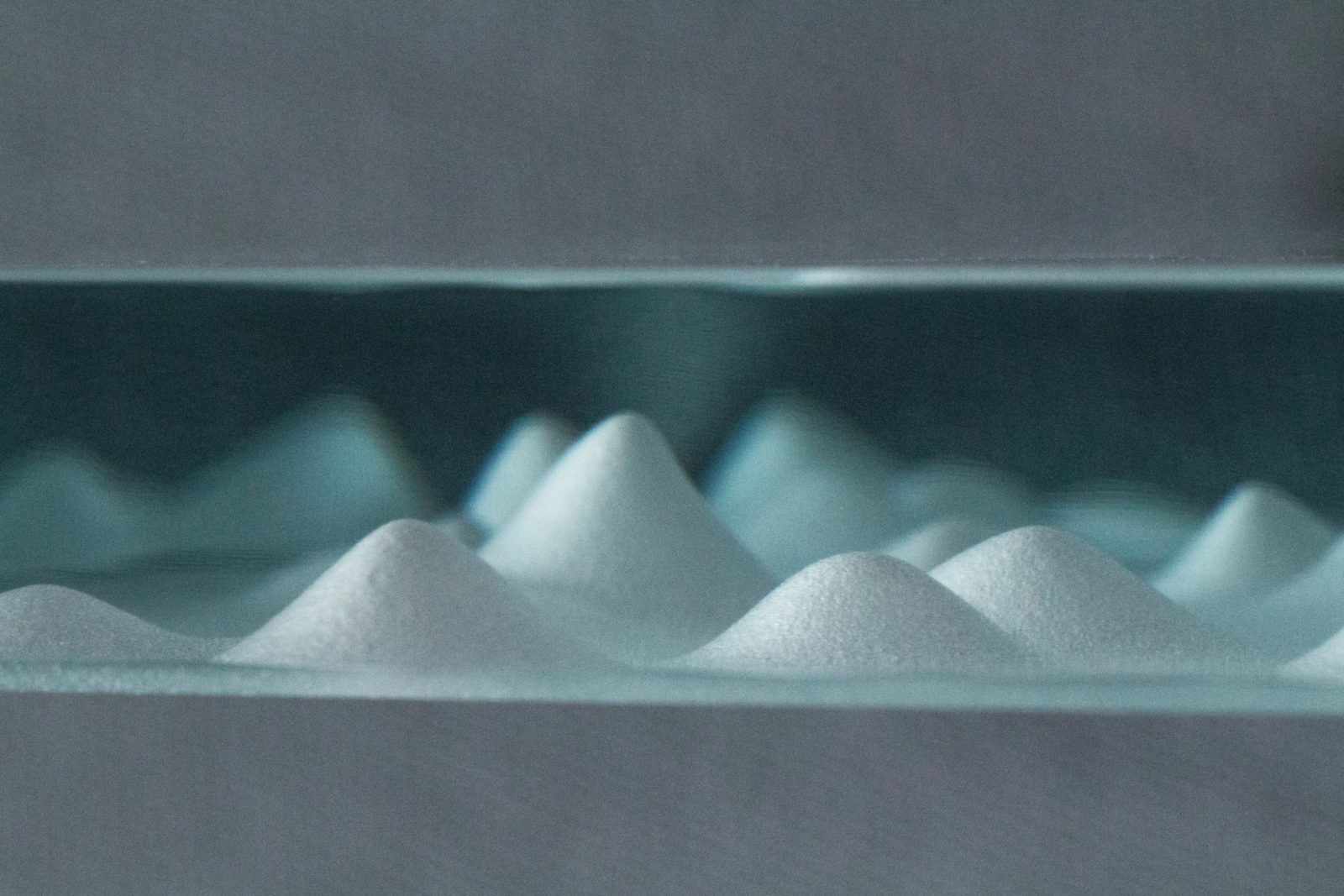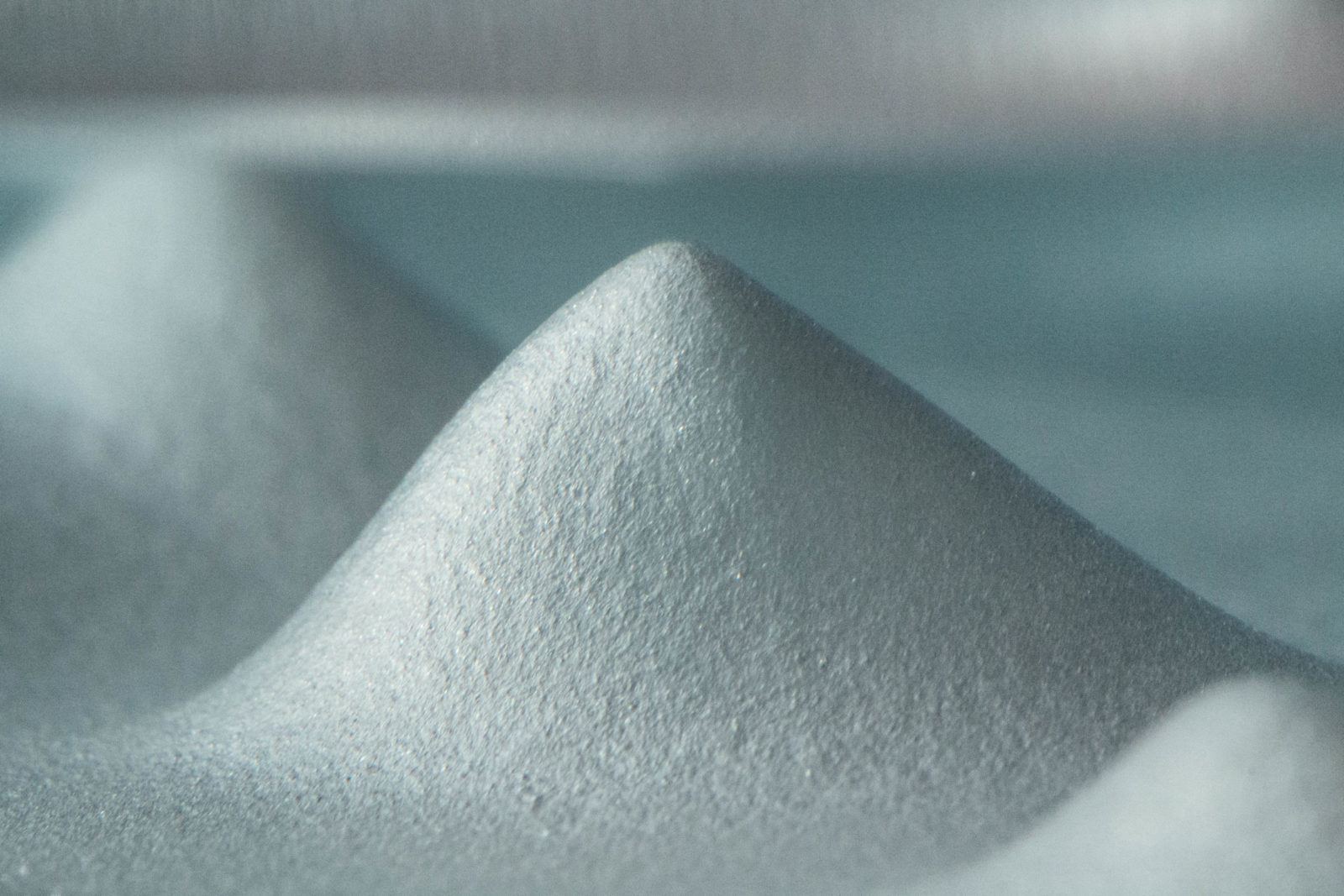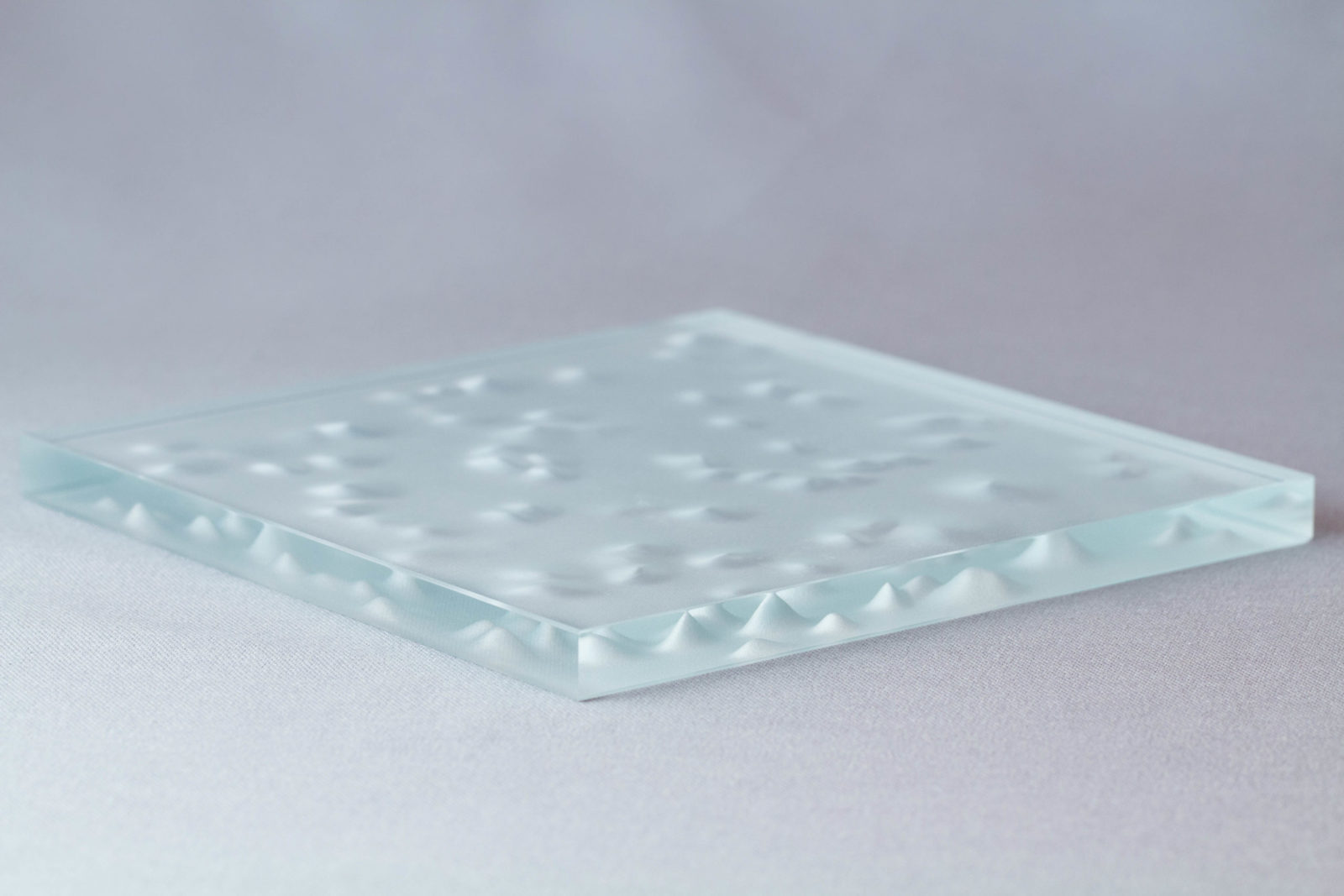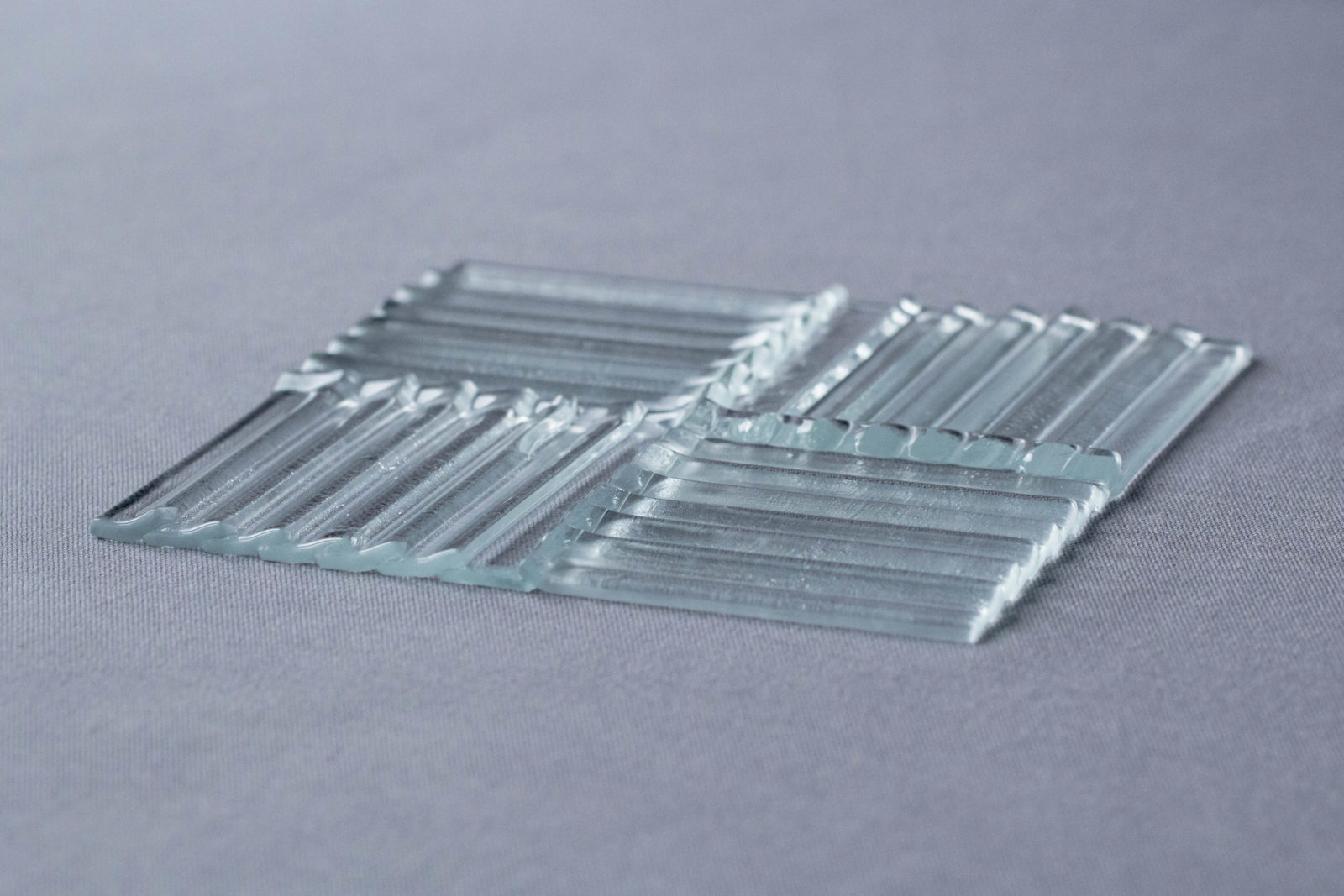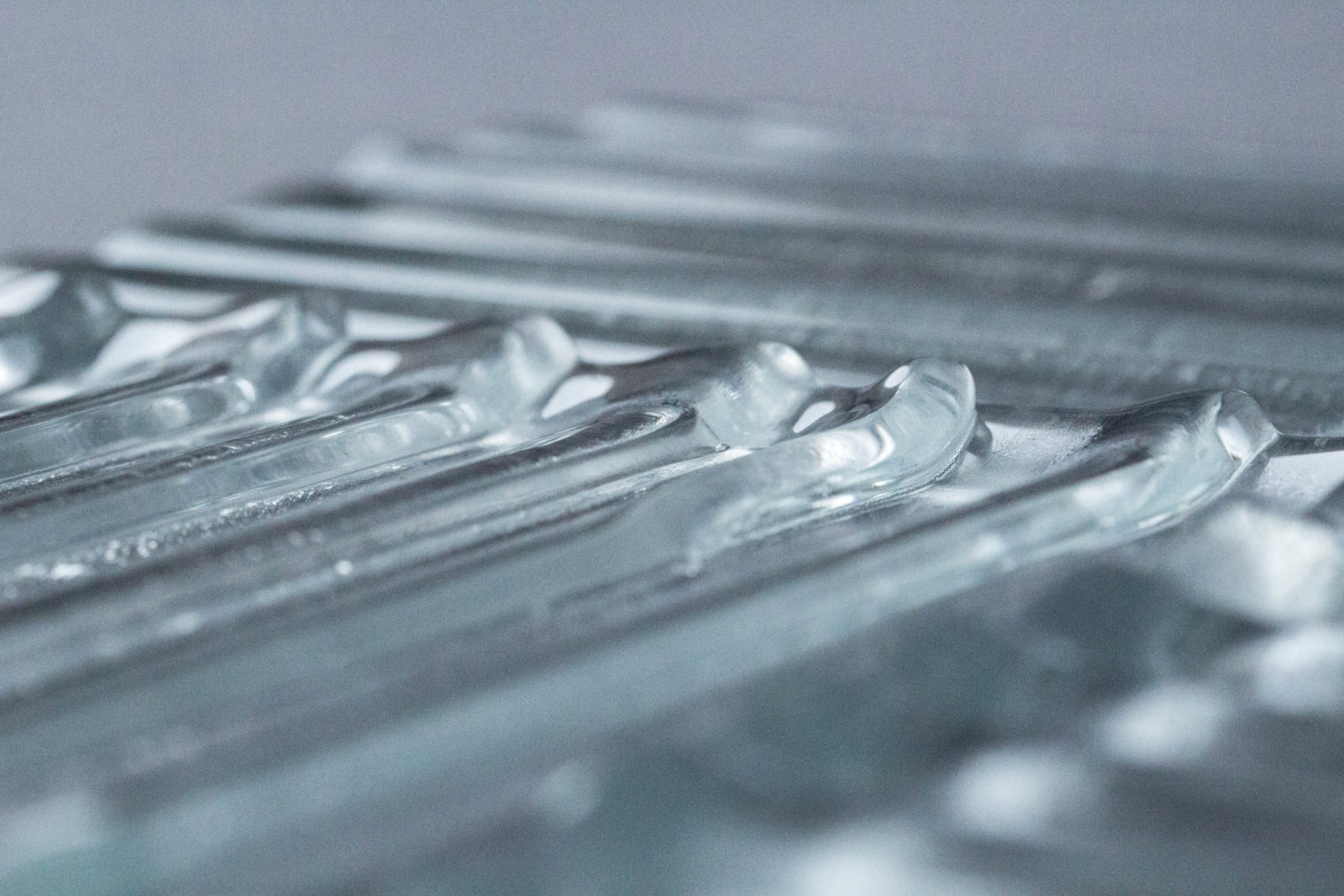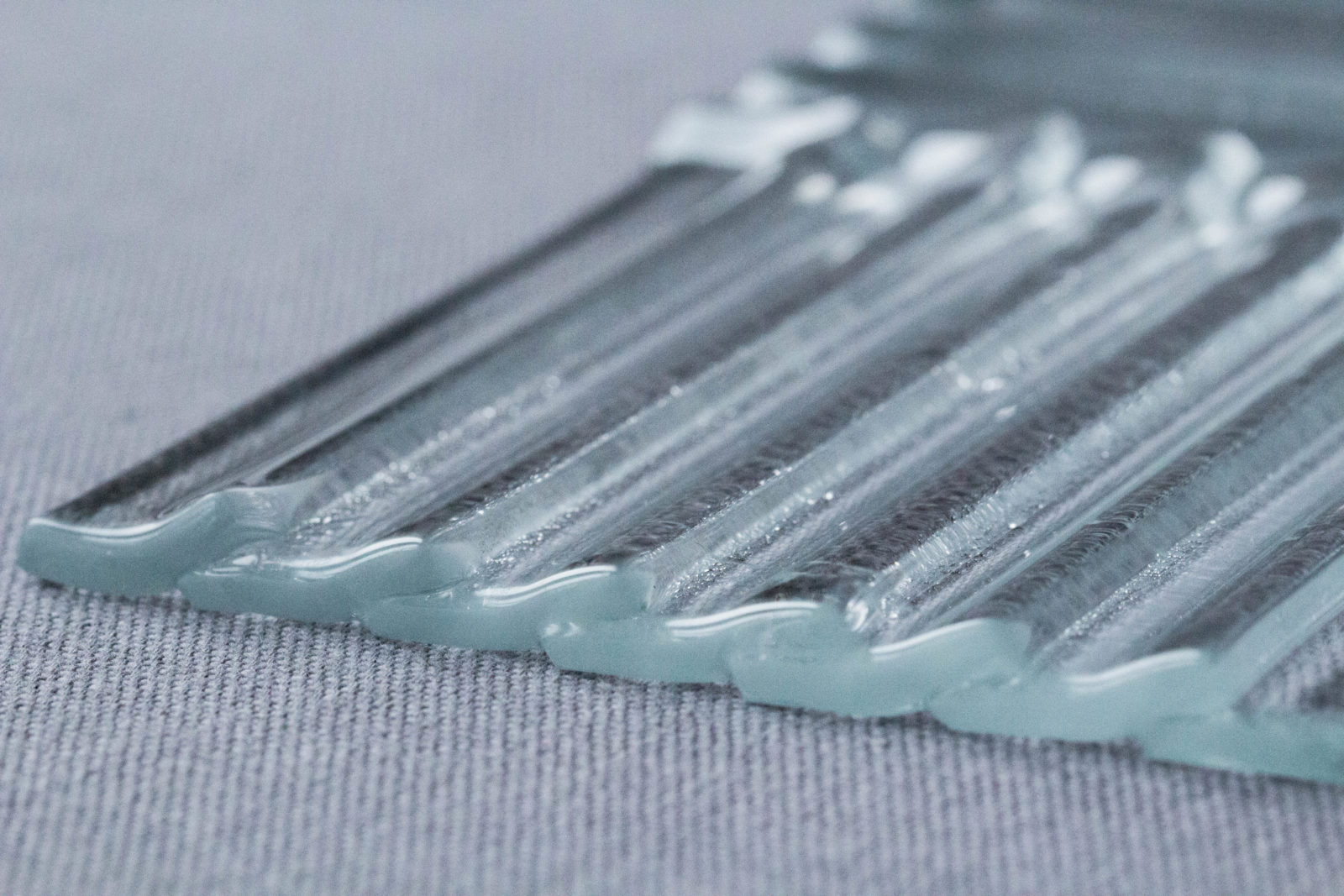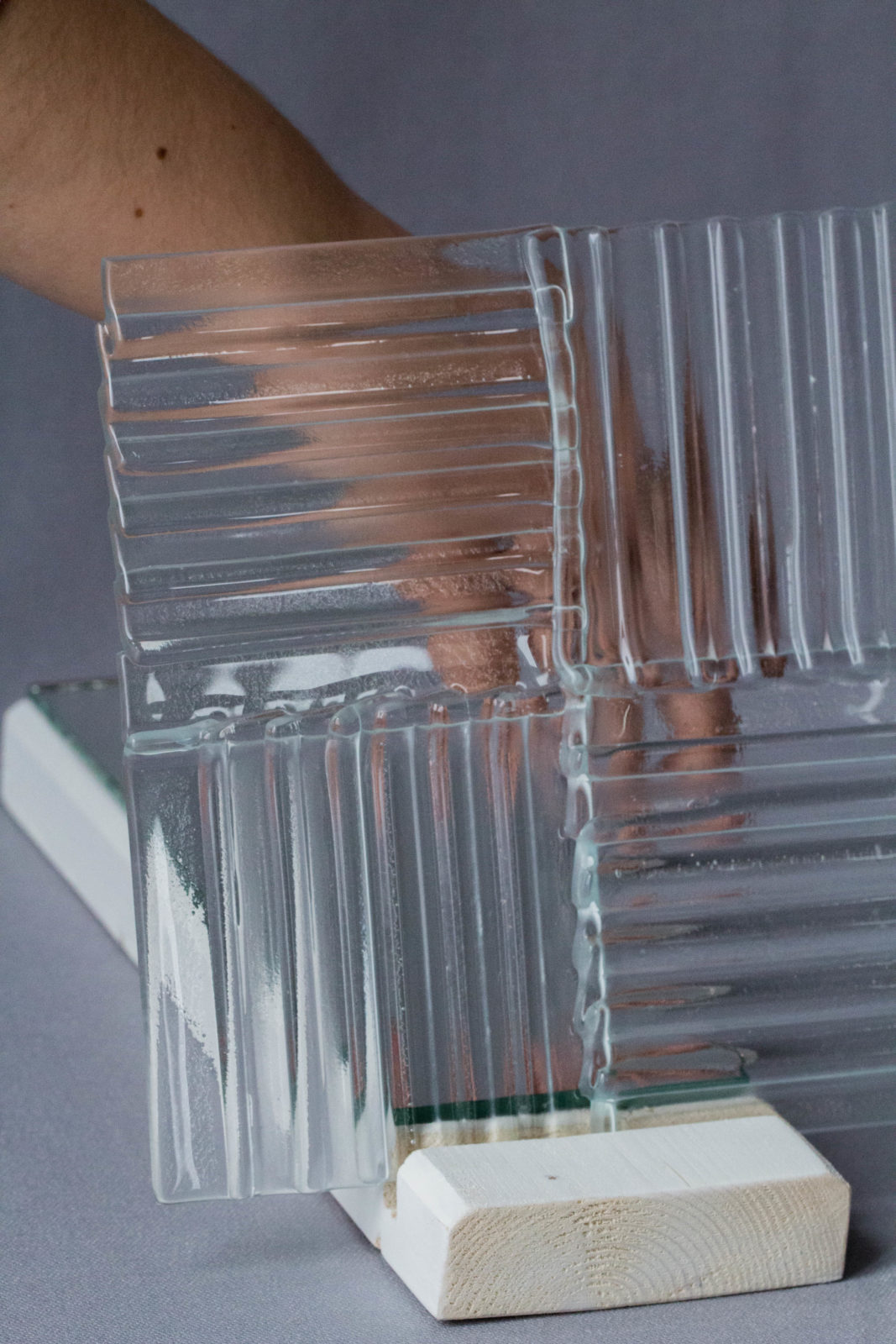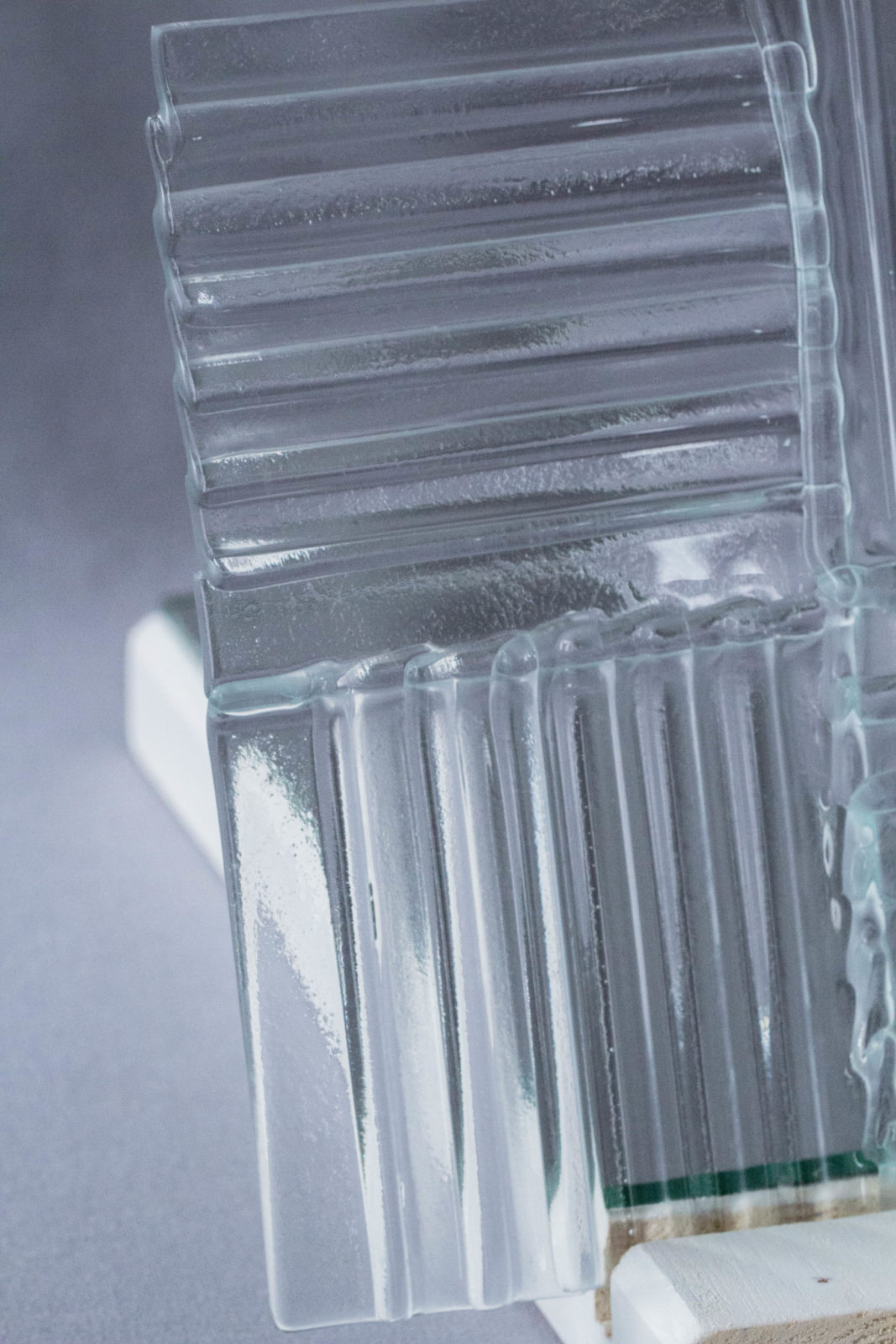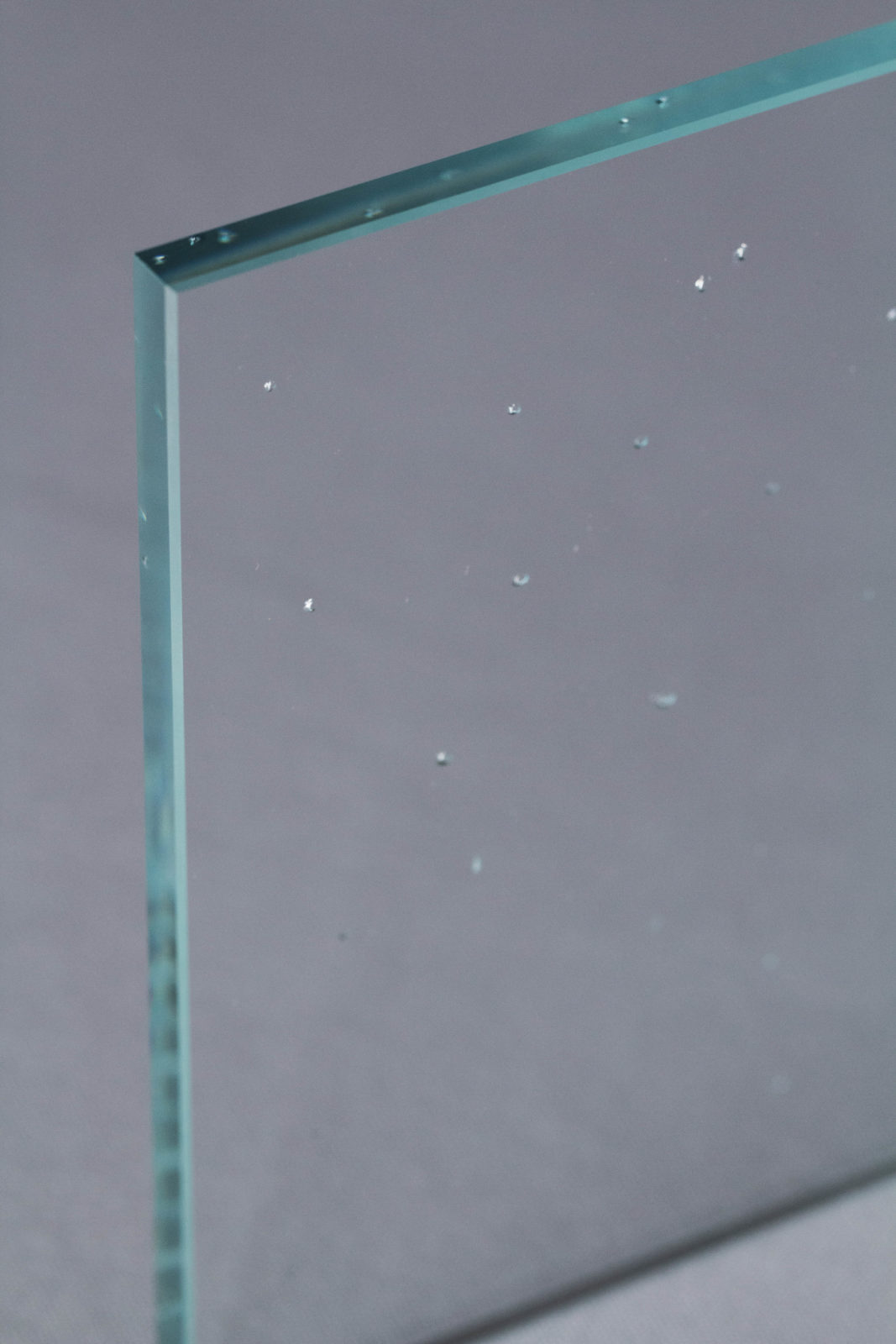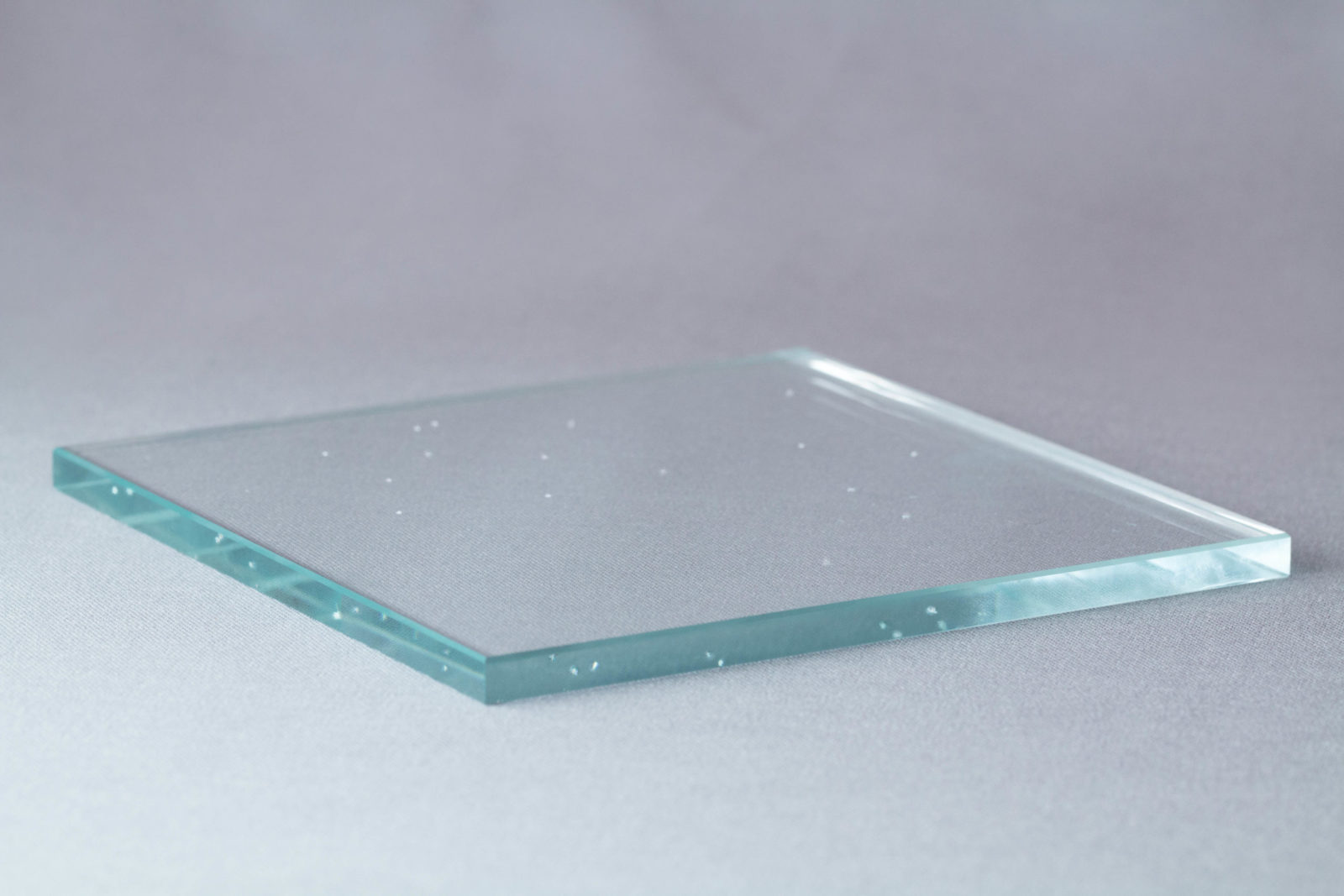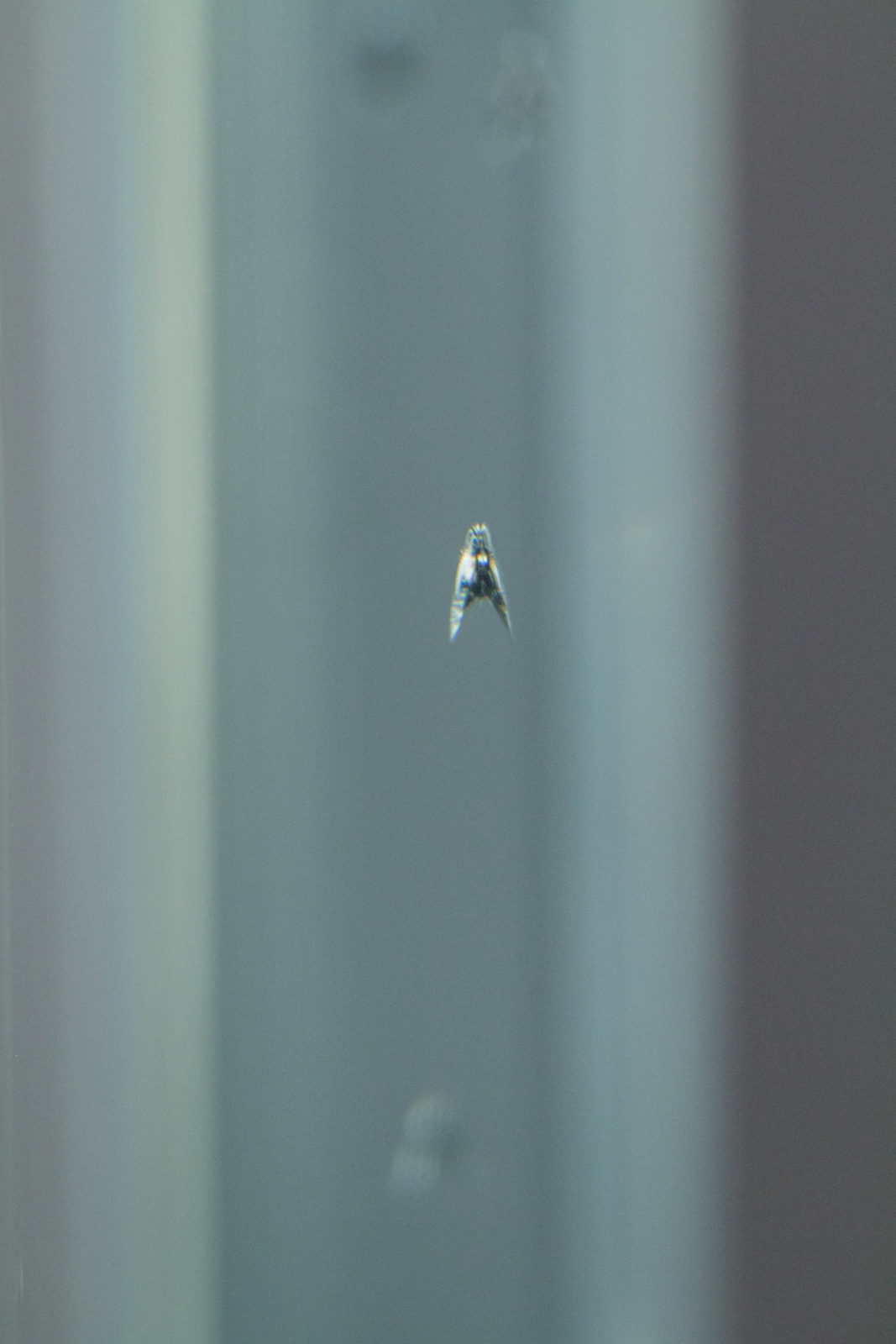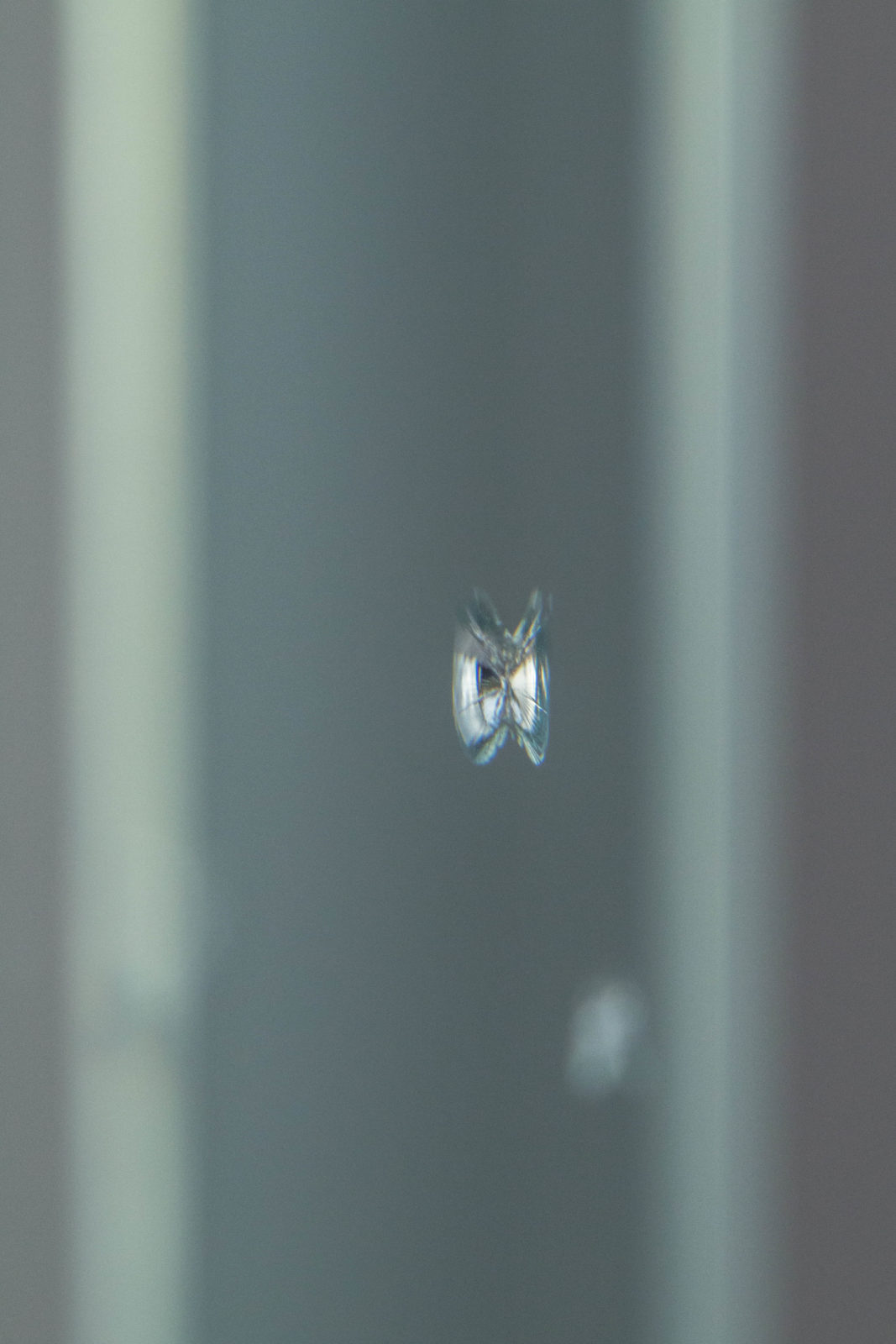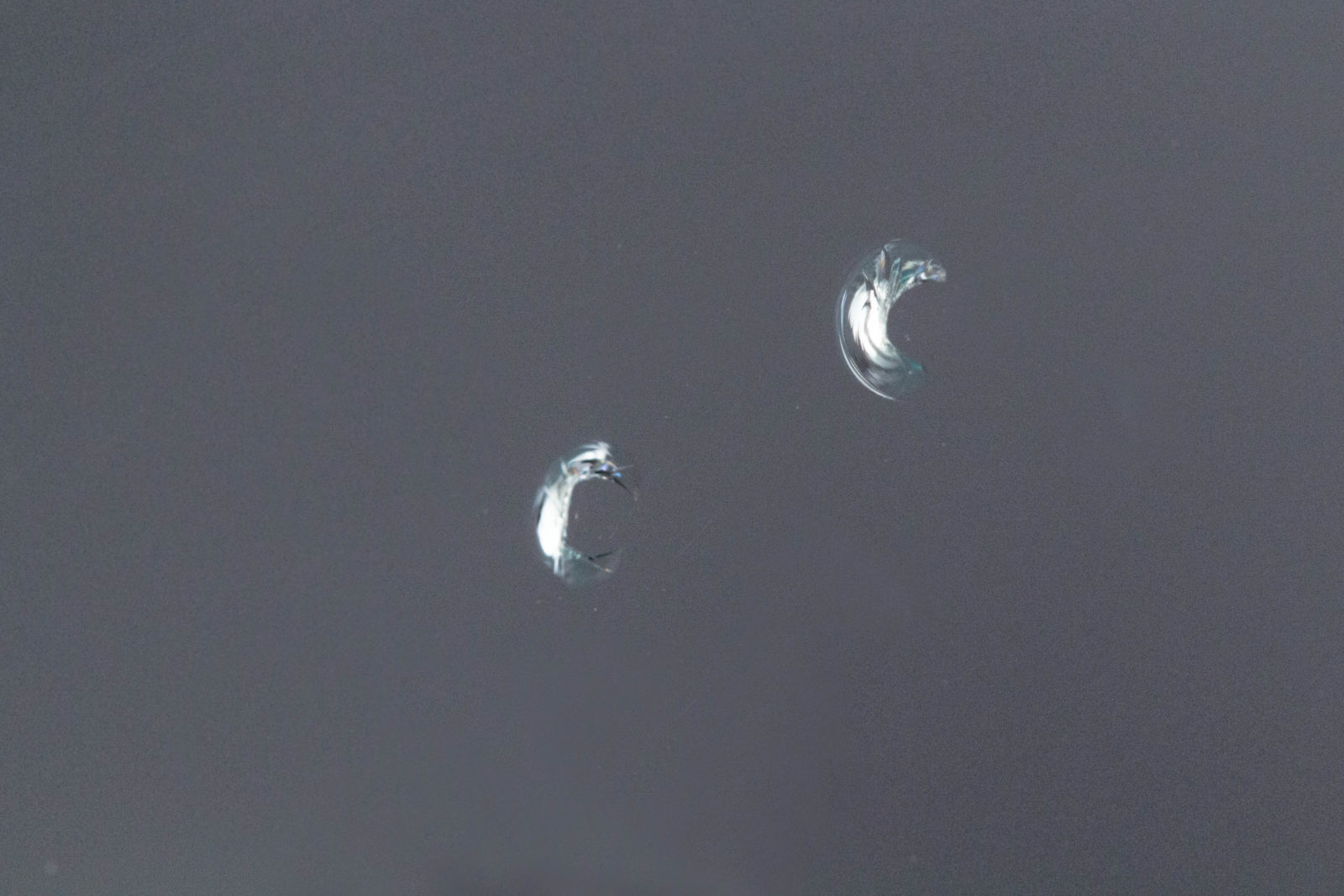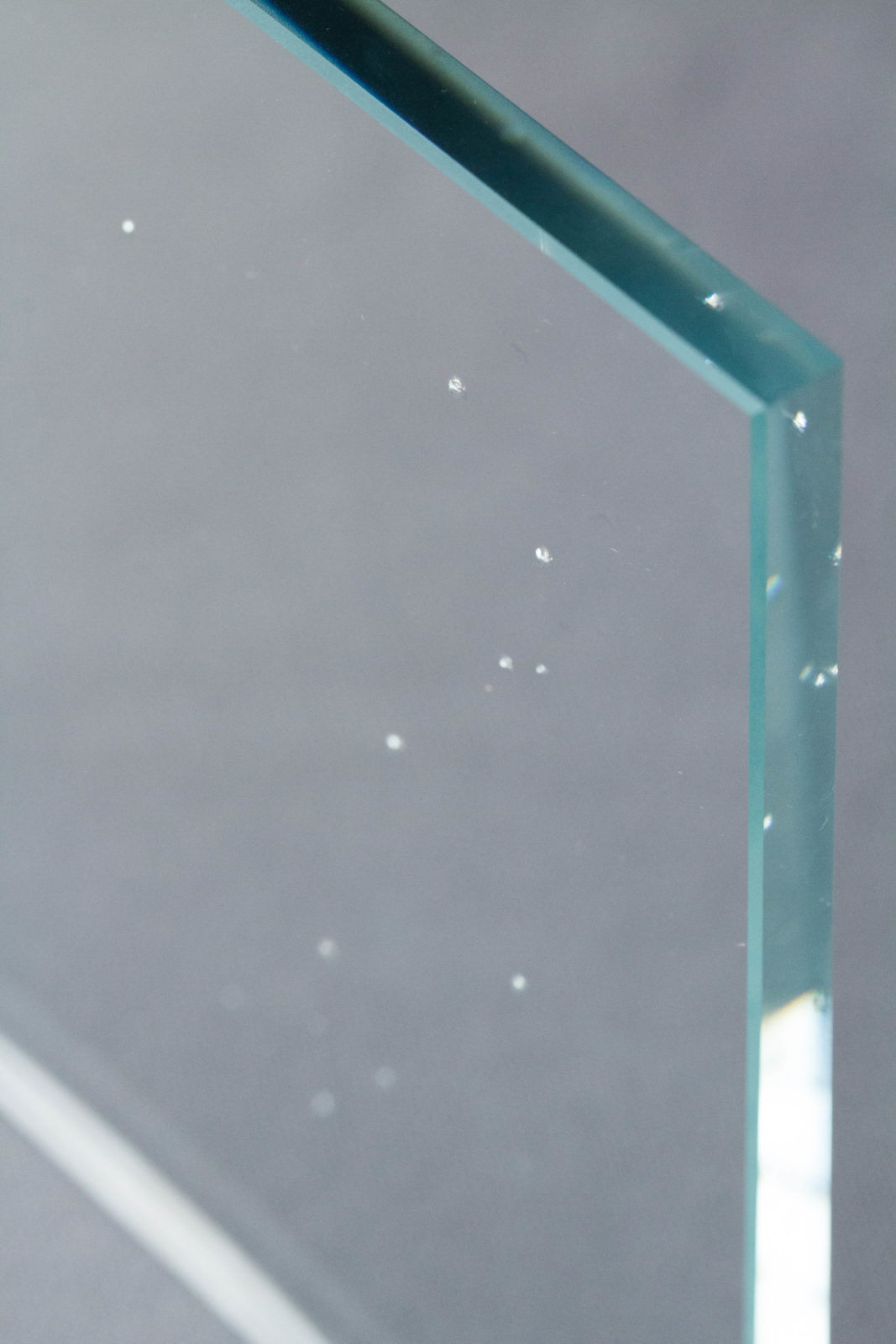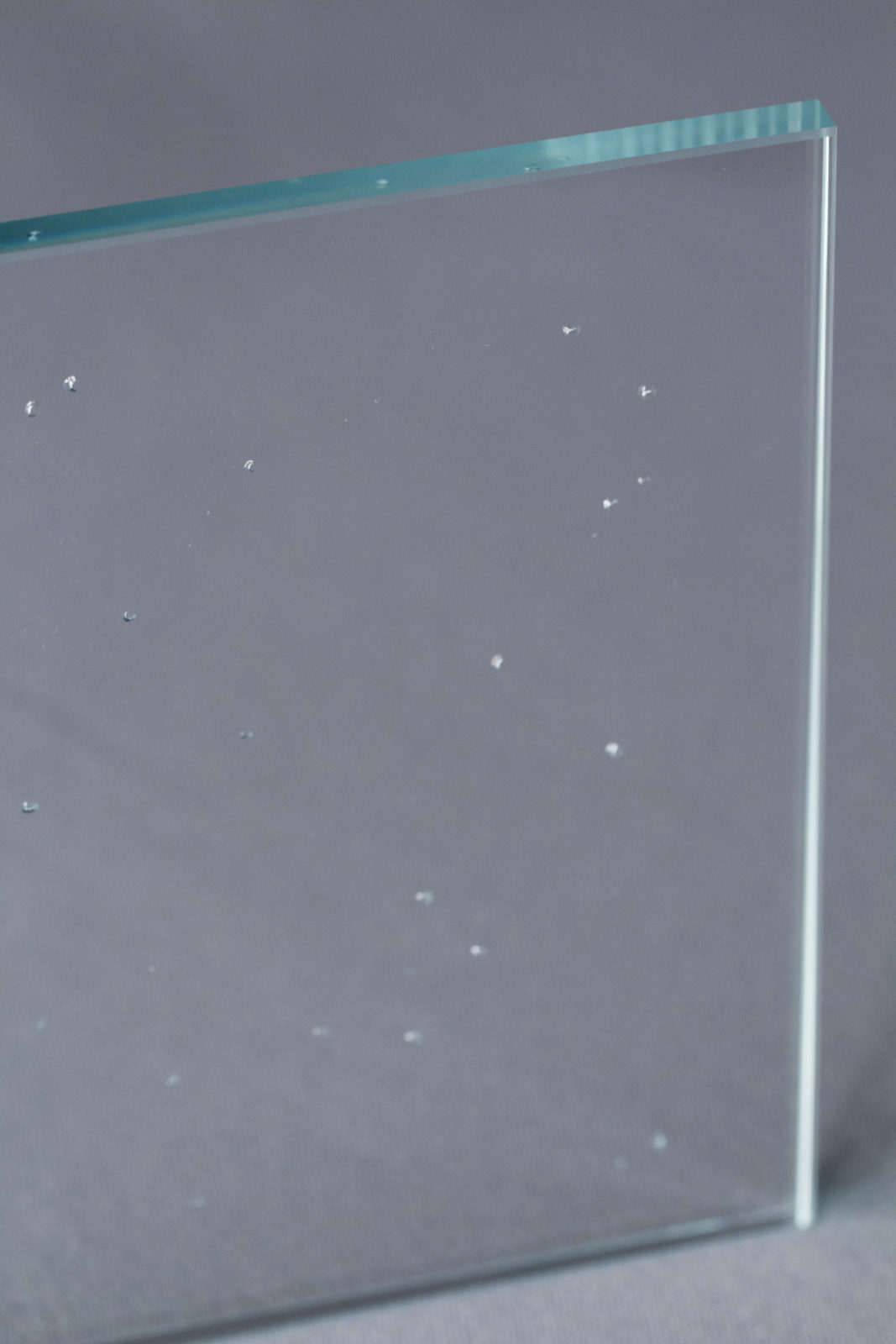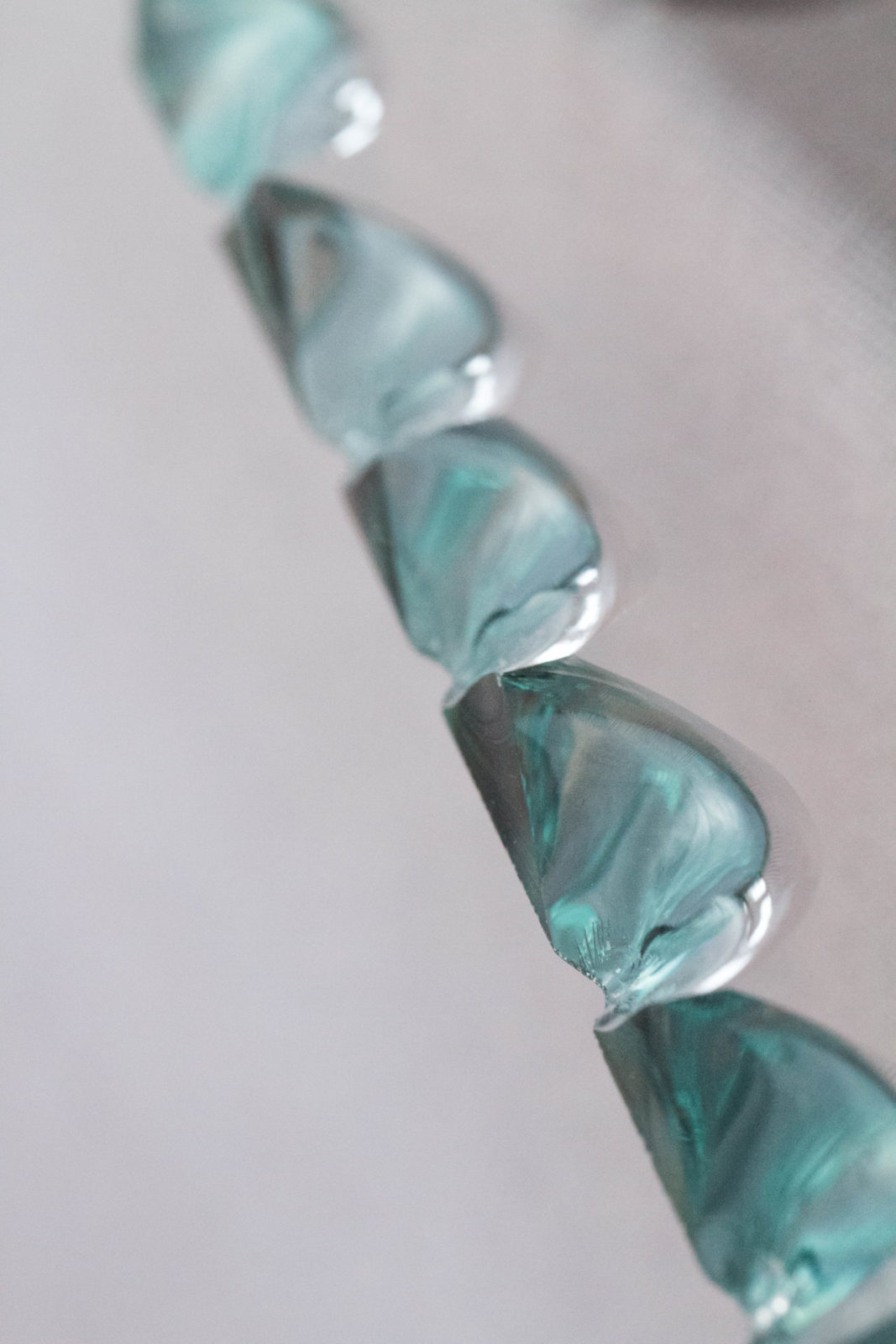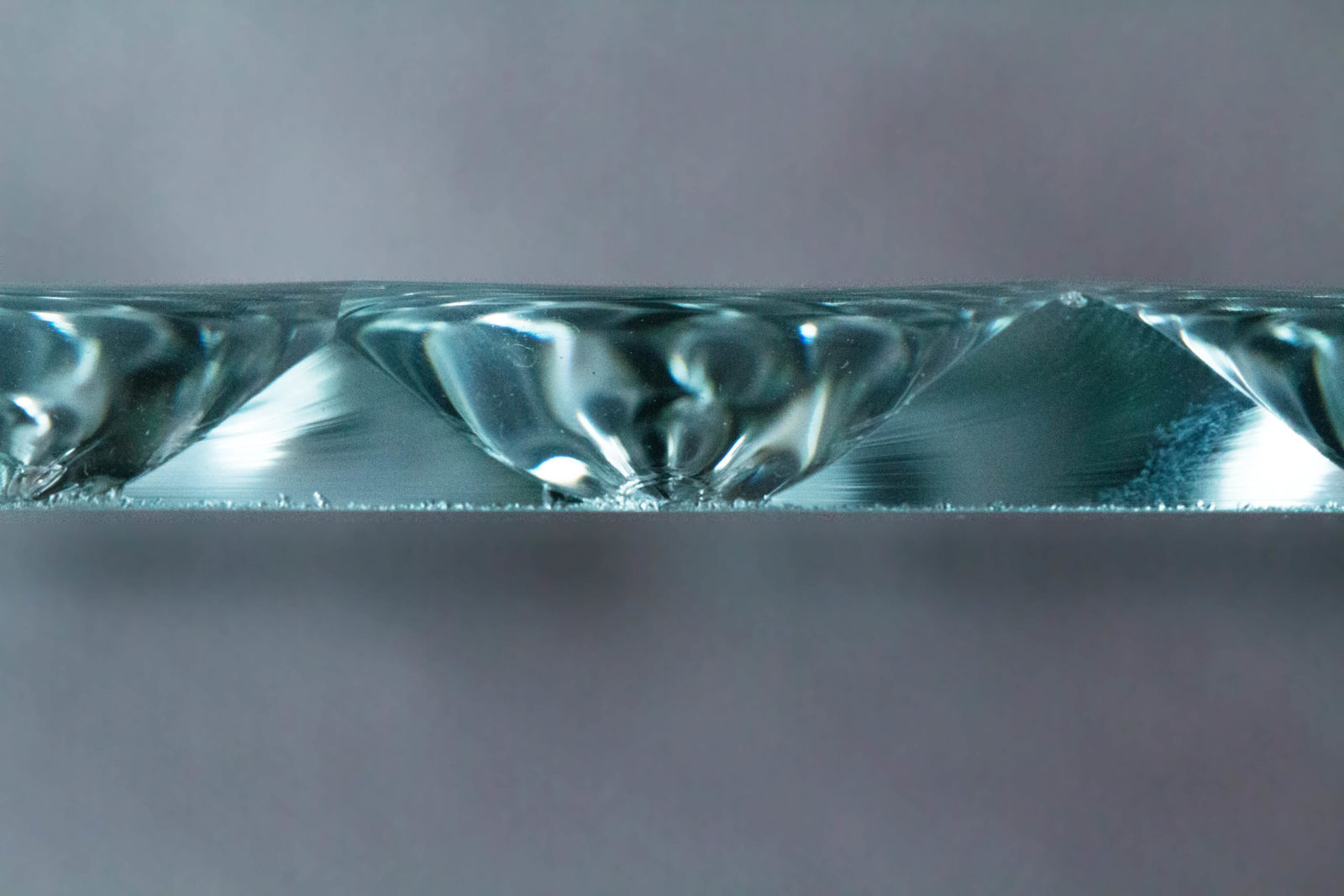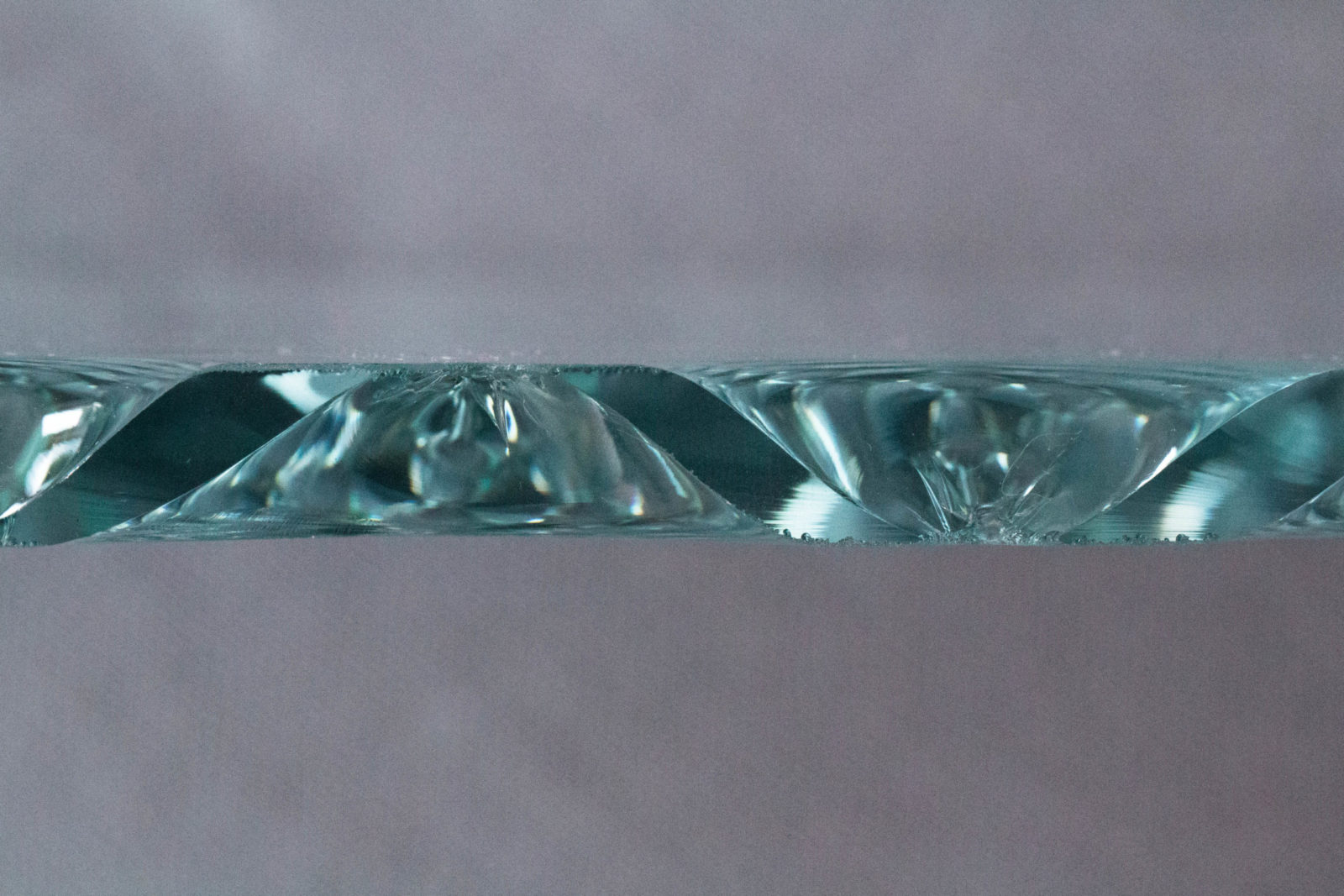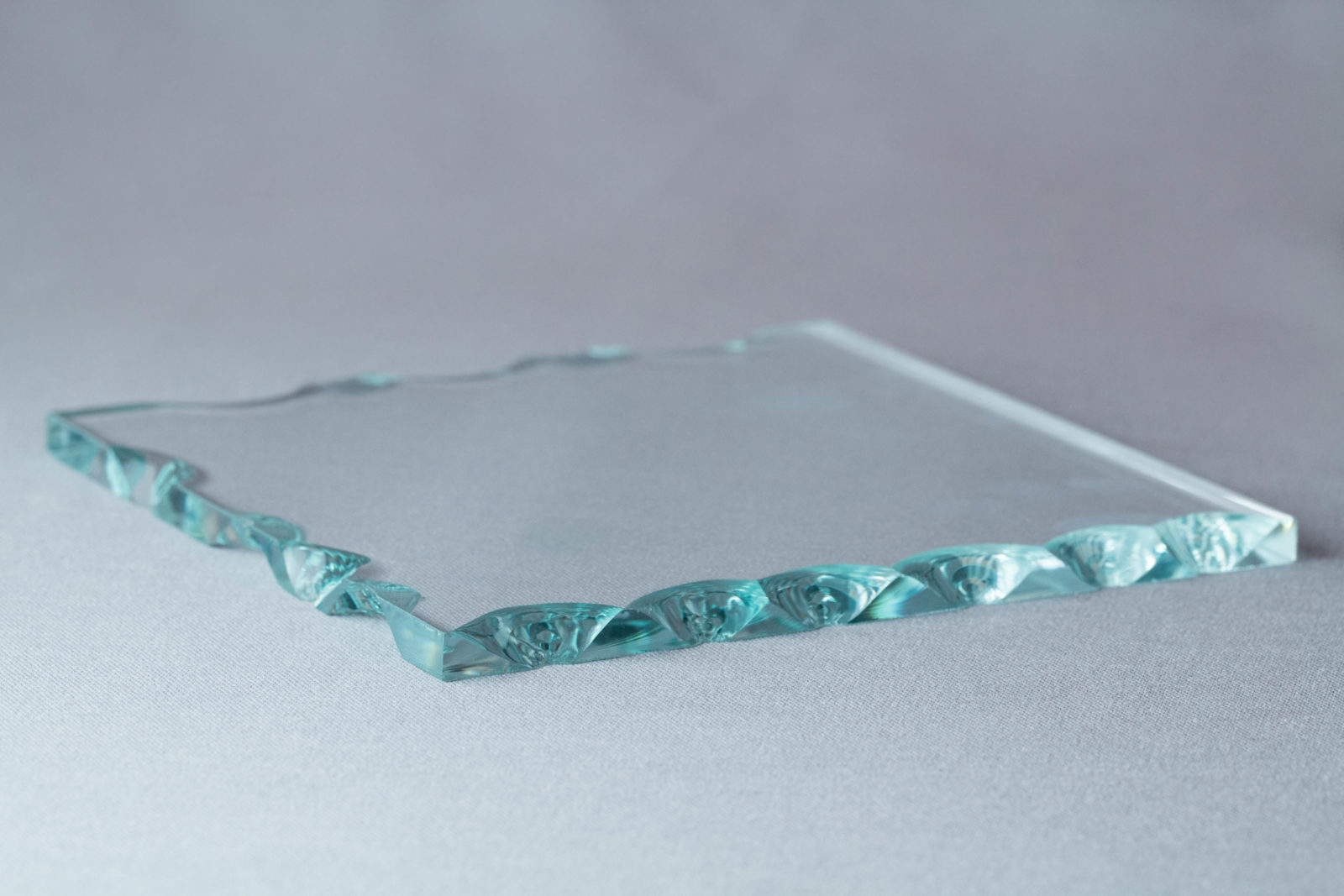Gust
Available from 10mm thickness.Long sticks are placed side by side to create this pattern. As you move along this surface, you can see an effect; the wall is translucent when you are facing it, transparent if you are at one end and opaque if you go to the other end. The sticks used come from unused glass scraps in order to make the best use of the material produced and to avoid unnecessary waste.
Squall
Available from 10mm thickness.As with the Brume collection, this pattern is obtained by fusing the sticks. They are however on the edge, which gives a very different result. The pattern is enchanting, almost like a white lace moving in the wind. The pieces of glass needed to make the sticks are chosen from the glass scraps of the glassworks to encourage an intelligent use of resources.
Breeze
Available from 10mm thickness.Like a gentle breeze, these white curves dance before our eyes. Nosqua drew these lines with an engraving pen and then fused the different pieces together. All kinds of patterns can be imagined. In order not to throw away unused glass, Nosqua uses glass scraps to create this material.
Fog
Available from 10mm thickness.Nosqua created this material by fusing randomly shaped pieces of glass. We obtain a more or less opaque surface through the control of different parameters. The pieces are selected from glass scraps from the mirror industry in order to encourage the intelligent use of resources.
Cloud
Disponible à partir de 8mm d'épaisseur.This blue coloured effect is achieved by including copper in the glass. The copper oxidizes during the firing process, leaving small clouds of blue bubbles that appear to float in the glass. This material is made from glass scraps to create a virtuous circle.
Mist
Available from 10mm thickness.You obtain Brume by fusing glass sticks. Results vary, depending on the firing curve but also on the colour of the glass we select.. The first sample you can see is almost opaque while the last sample is almost transparent, revealing a light veil. This material is made from glass scraps in order to create a virtuous circle.
Cope
Available between 5mm and 15mm thickness.This technique consists in realising a frozen aspect decoration on glass depth thanks to mechanic action of pliers. Nosqua uses this technique with gradient intensity to create light effects into the glass edge.
Used in the range :
- Érèbe
Sandblasting
Available from 10mm thickness.Sandblasting is a technique consisting of projecting high-pressured sand on an object. From surface to depth, Nosqua appreciates varying sand’s use. Depending on pressure and time of exposition, by hand, they create relief through the game on glass depth.
Used in the range :
- Bel Ava
Heat seal
Available from 20mm thickness.Heat seal signifies sticking two glass pieces together, under the action of heat glass pieces will merge and be as one. Thanks to the control of baking and compositions Nosqua reconstructs glass surfaces from pieces.
Used in the range :
- Private: Ondulation
Poc
Available from 5mm thickness.“Poc” is a process which creates a microcrack on glass surface, imperceptible to touch, leading to a radiance twinkling under the light. Nosqua wanted to enlighten the inside of the glass so it created “Poc”. Switch on the light and “Poc” is revealed, switch it off and “Poc” disappears.
Used in the range :
- Territories
Shell
Available from 5mm to 30mm thickness.This technique consists of making a decoration in a form of shell on glass depth thanks to mechanic action of pliers or a hammer on their edge. Controlling pressure and force applied to realise the glass shells, Nosqua plays on their compositions and sizes to spread light.
Used in the range :
- Érèbe
